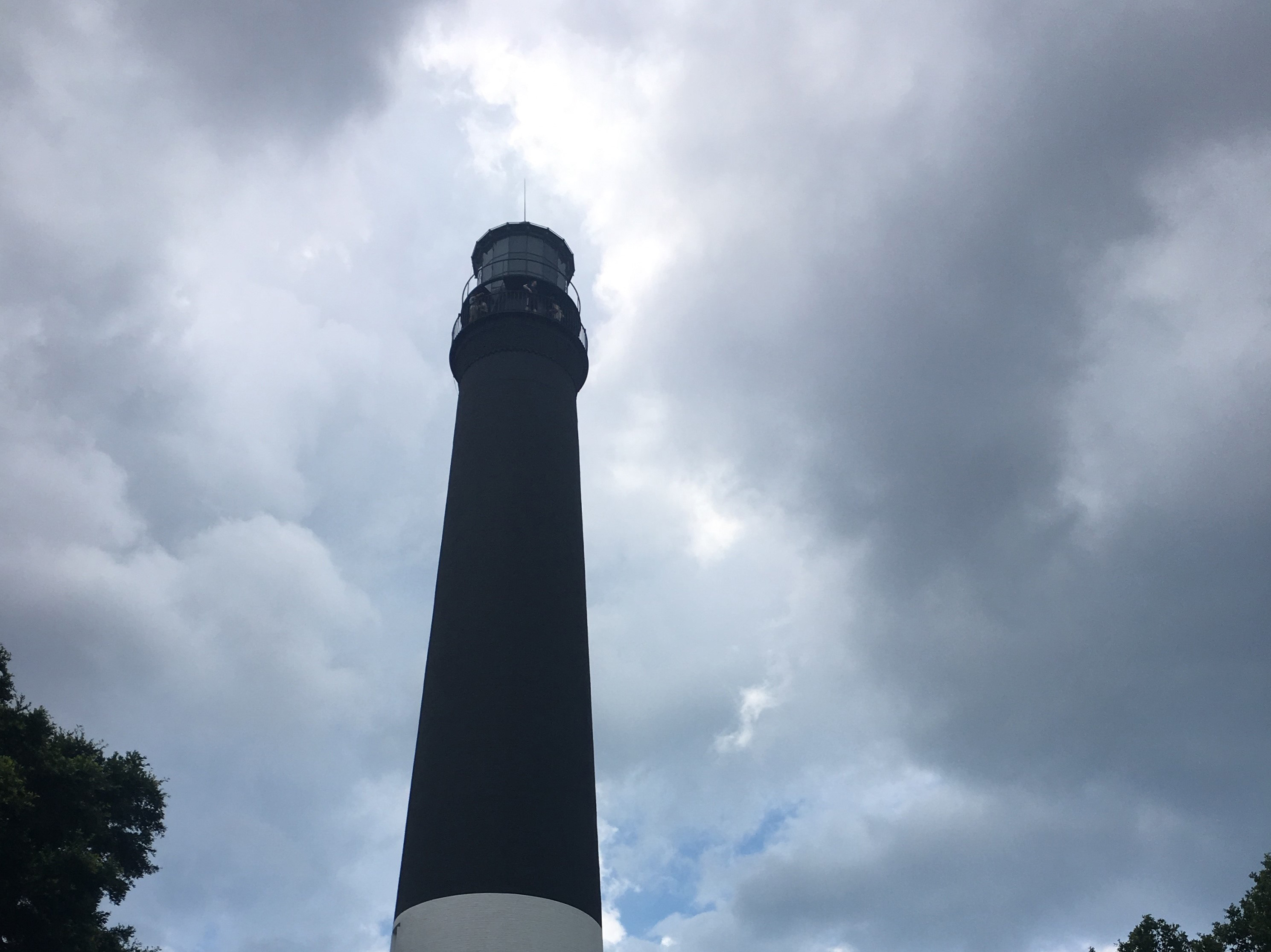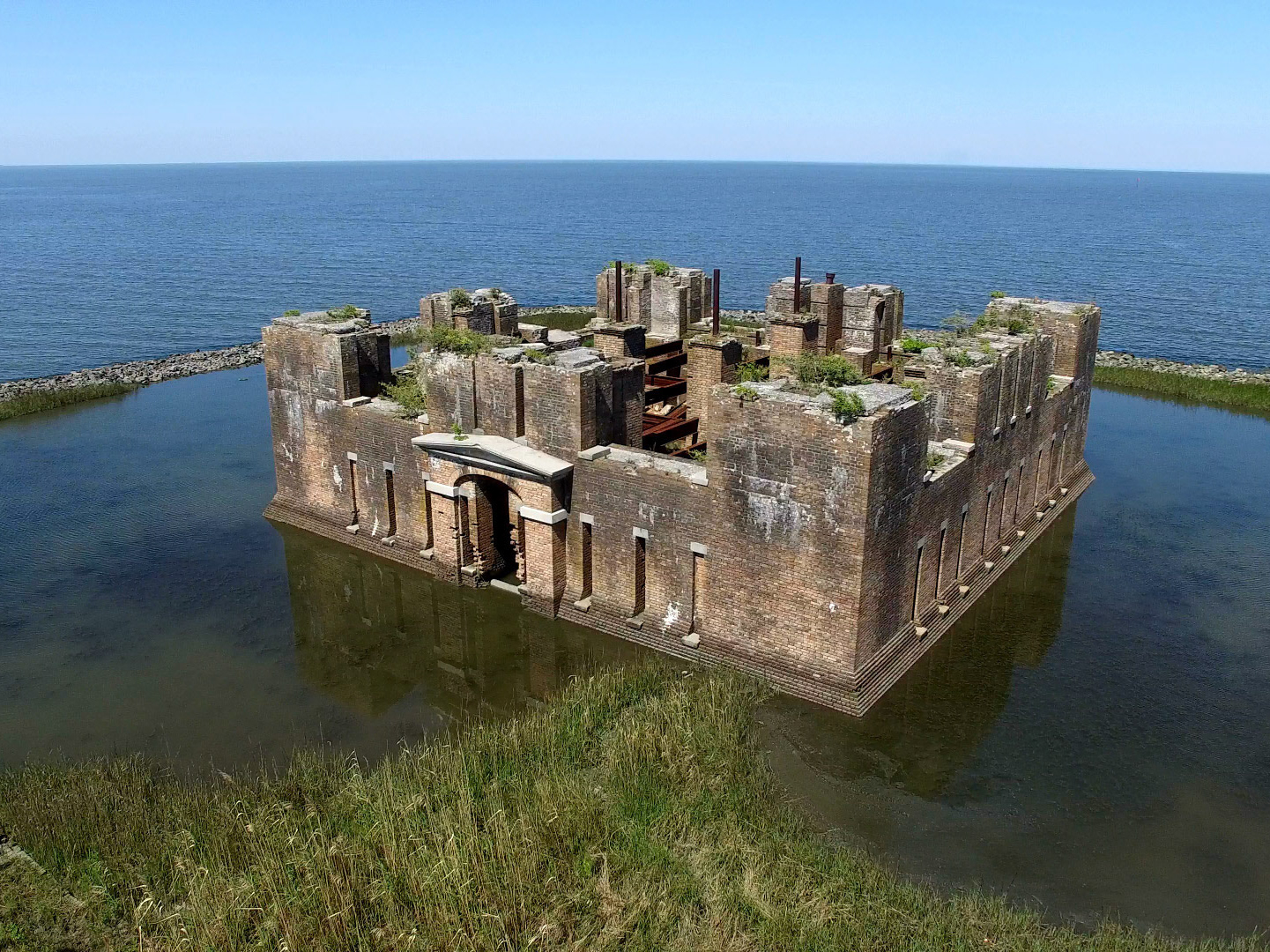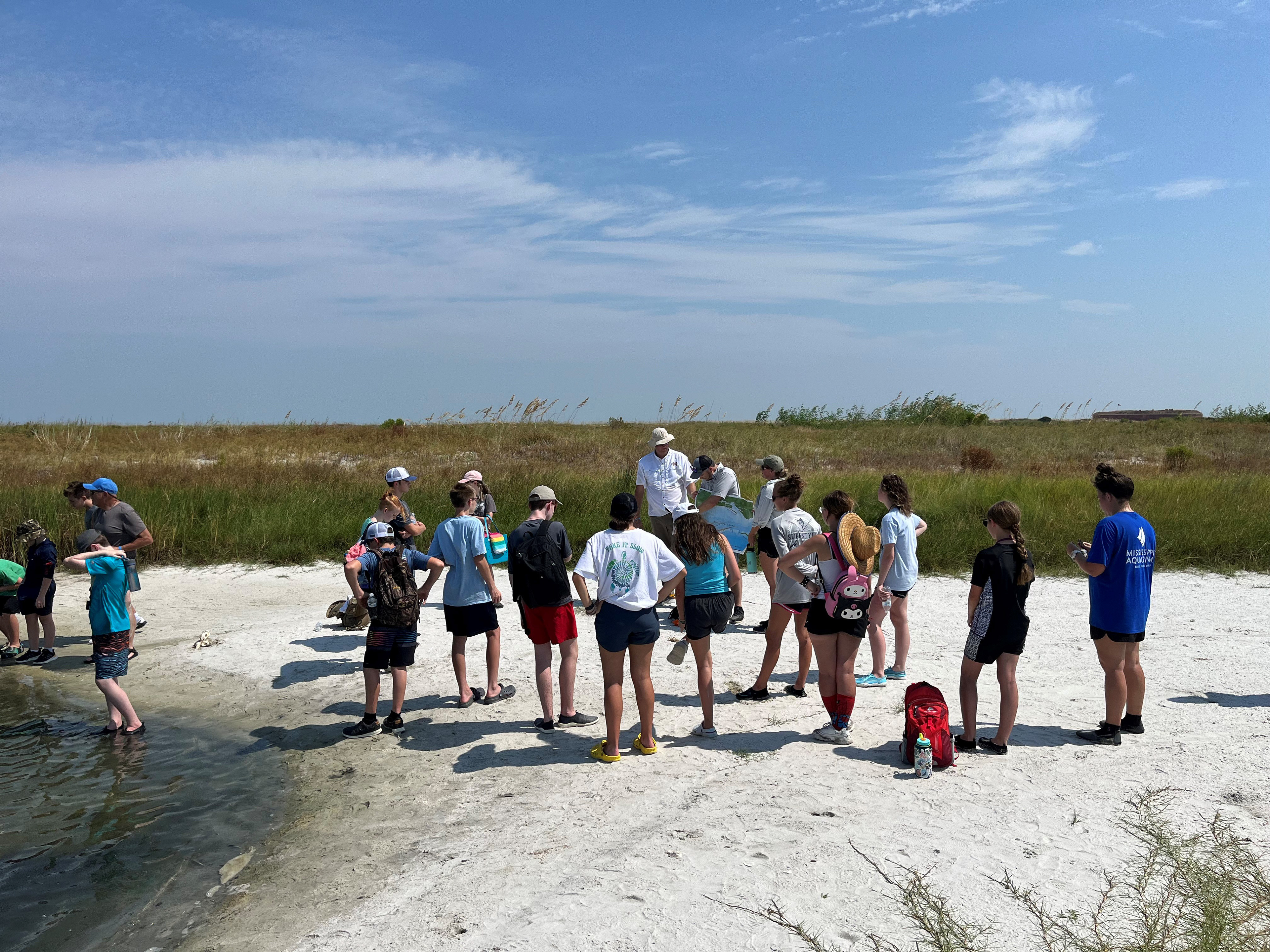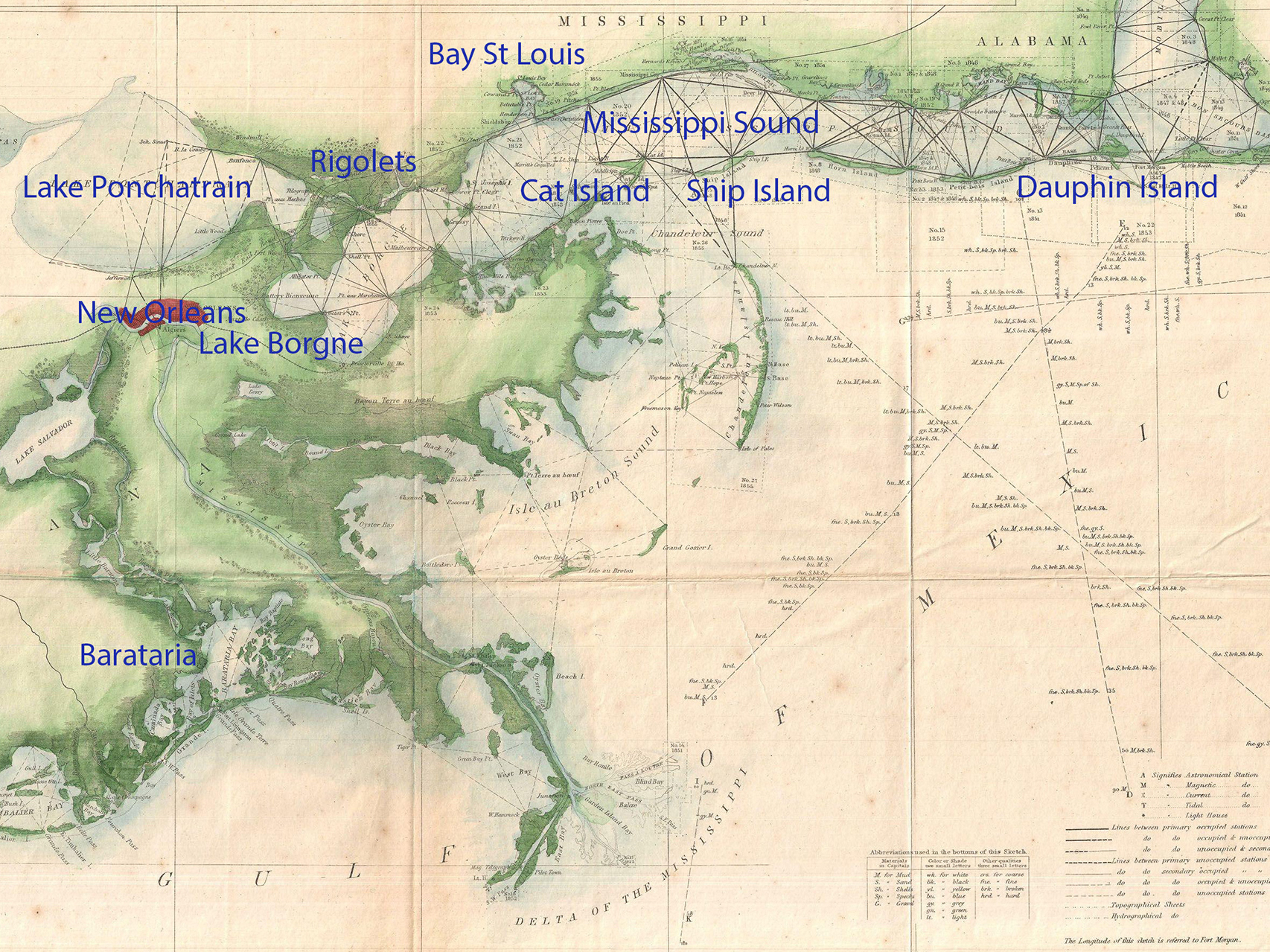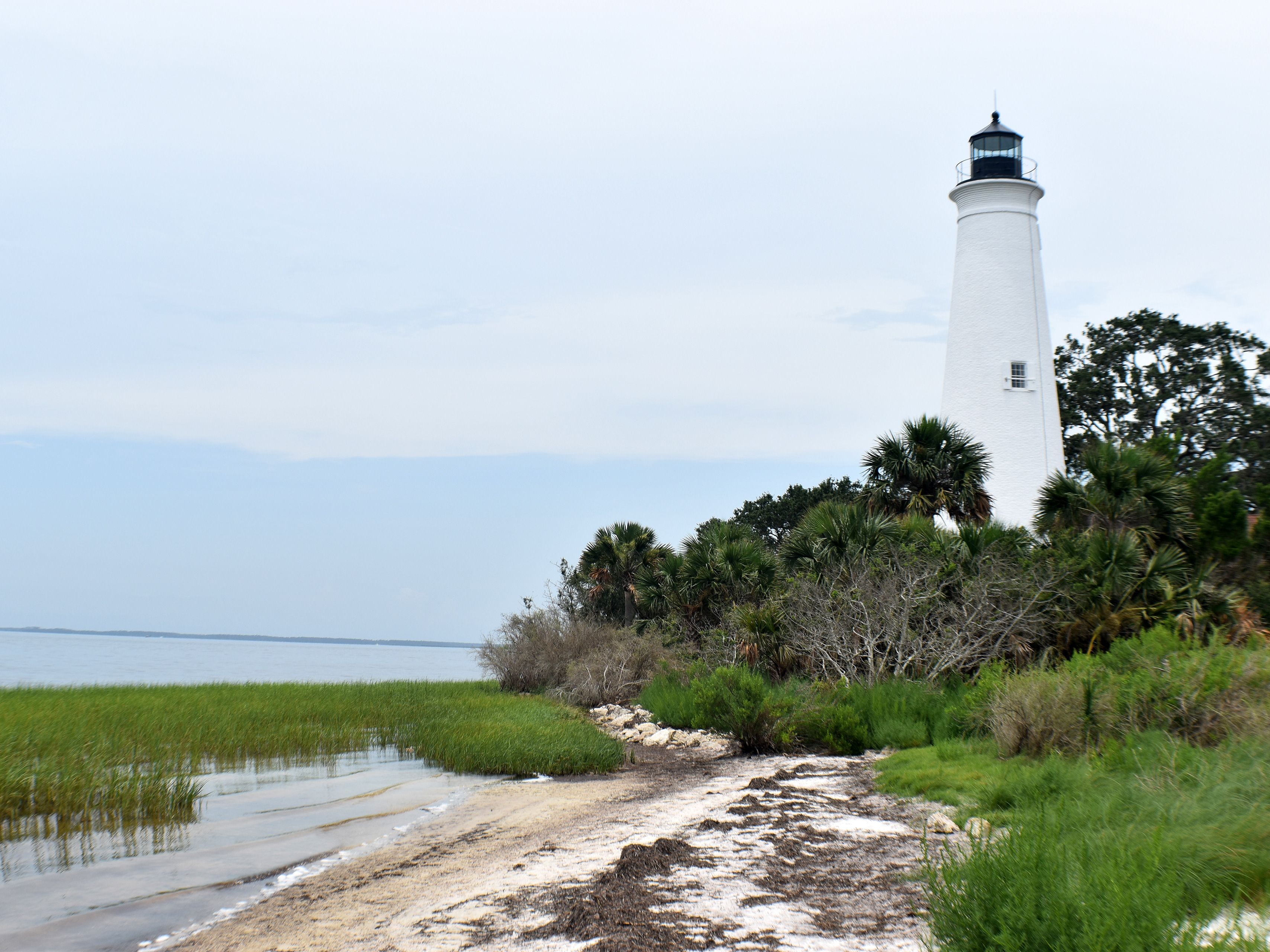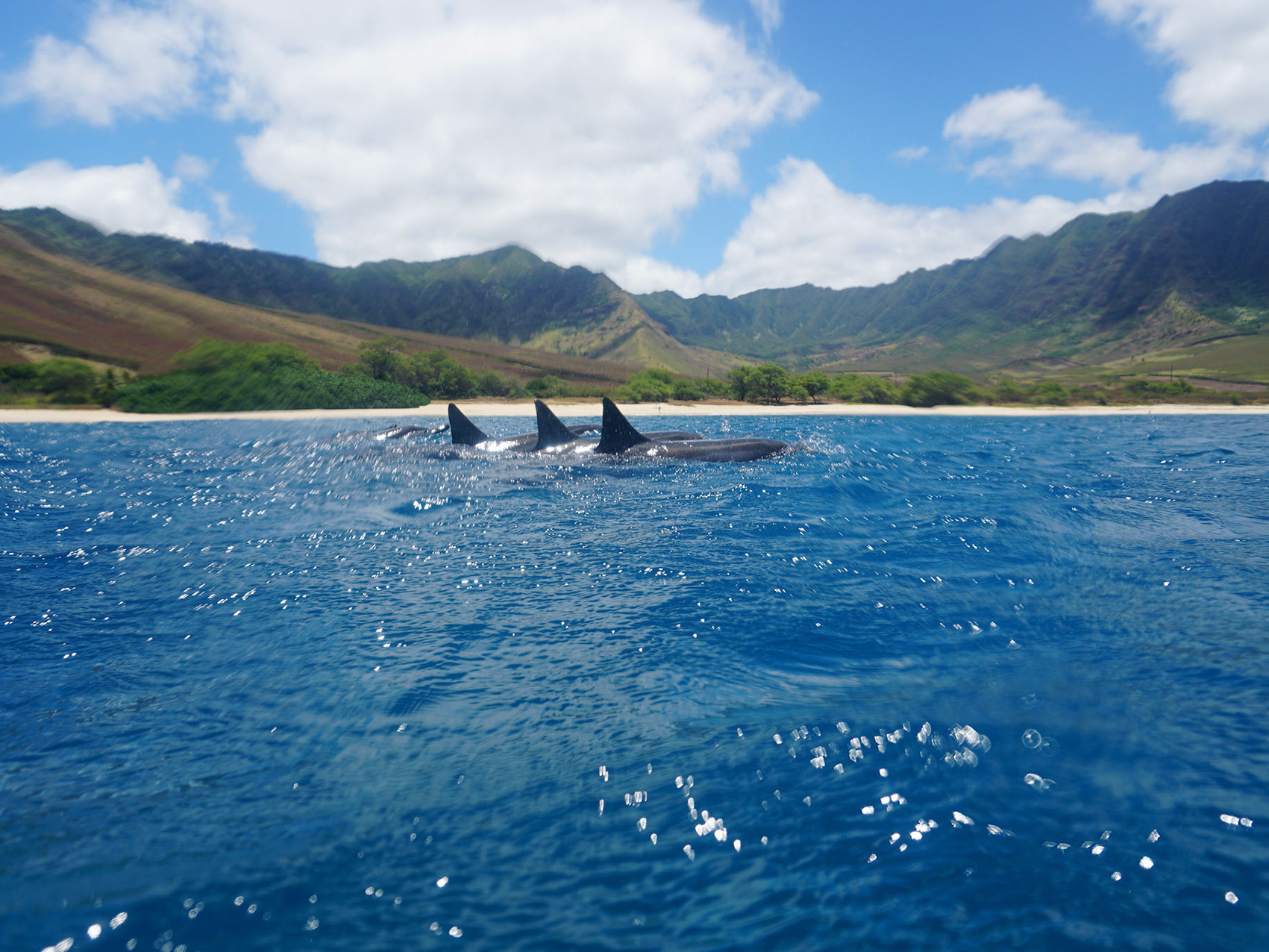Fort Morgan, is a third systems masonry "star" or bastion fort as discussed in my earlier works, and is located at the mouth of Mobile Bay in Alabama. Named for Revolutionary War hero Daniel Morgan, and built on the existing site of Fort Bowyer, which was involved in the final land battles of the War of 1812 as discussed under the headings of the "Battles of Bay Saint Louis and Lake Borgne. The fortification was completed, equipped and manned in 1834.
During the battle of Mobile Bay, Union naval forces under the command of none other than David G. Farragut, with assistance provided by an infantry and artillery force, attacked the much smaller Confederate Navy fleet under the command of Franklin Buchanan as well as the two forts guarding the mouth of Mobile Bay. It is here that Farragut stated his famous quote, "Damn the torpedoes, full speed ahead!". Farragut was able to get past the guns of Fort Morgan and enter Mobile Bay. After entering the bay, the US Forces captured the CSS (Confederate States Ship) Tennessee and CSS Selma, and sank the CSS Gaines, while also capturing Fort Gaines on the opposite side of Mobile Bay.
The city of Mobile was the last major Confederate port on the Gulf of Mexico, so its closure was a key final step in completing the blockade of Confederate supplies and an important factor in ending the war.
Used throughout the Spanish American War, World War I and World War II, this fort clearly details the technological evolution of U.S. coastal fortifications through time.
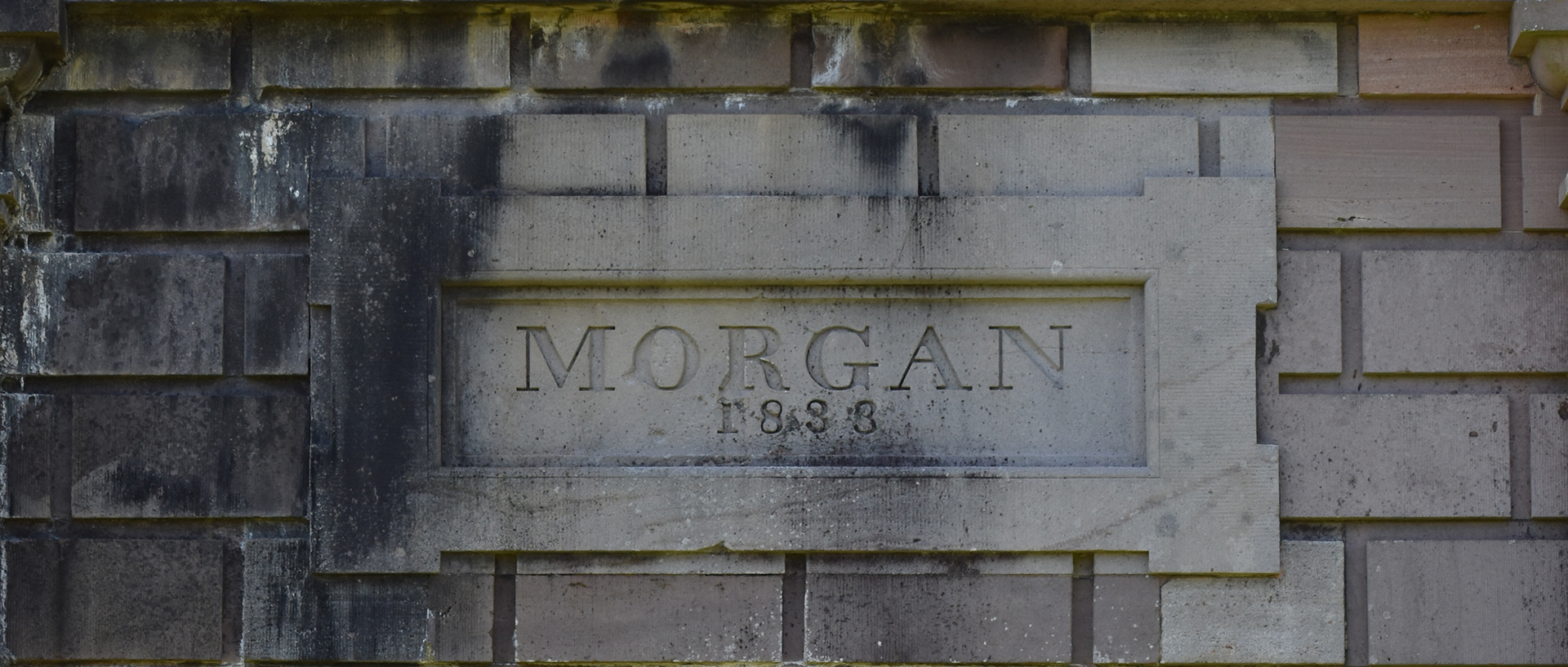
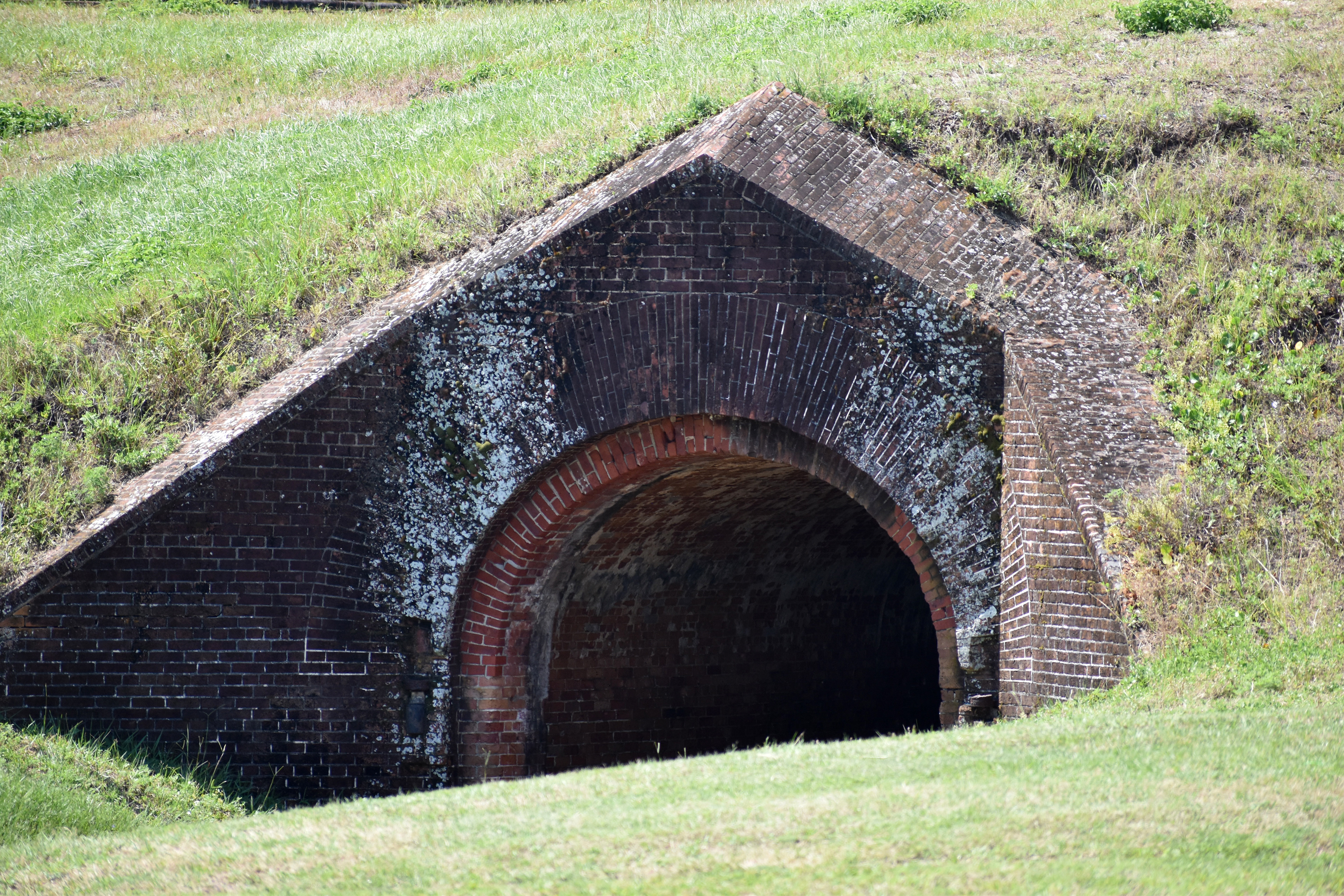

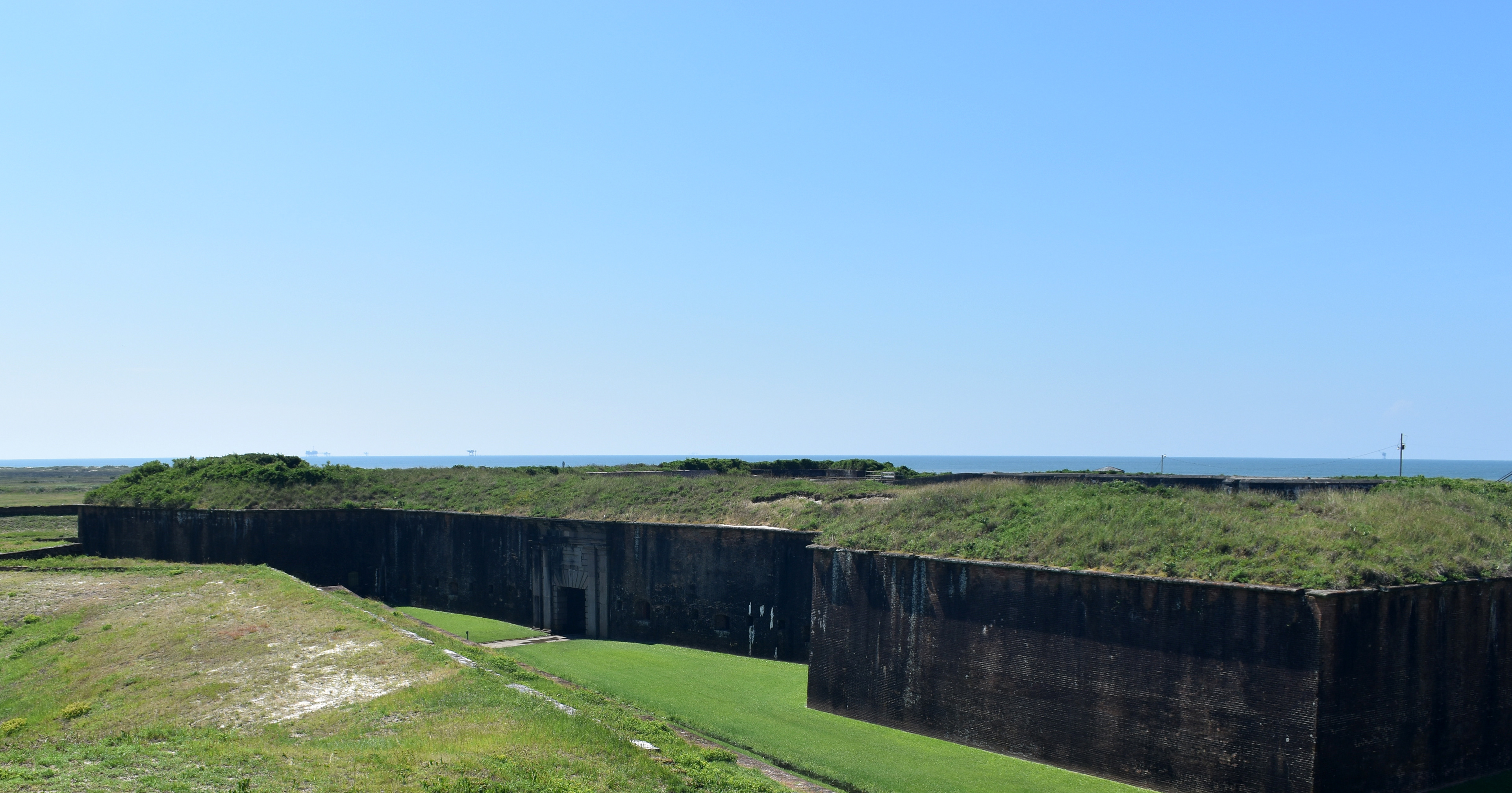
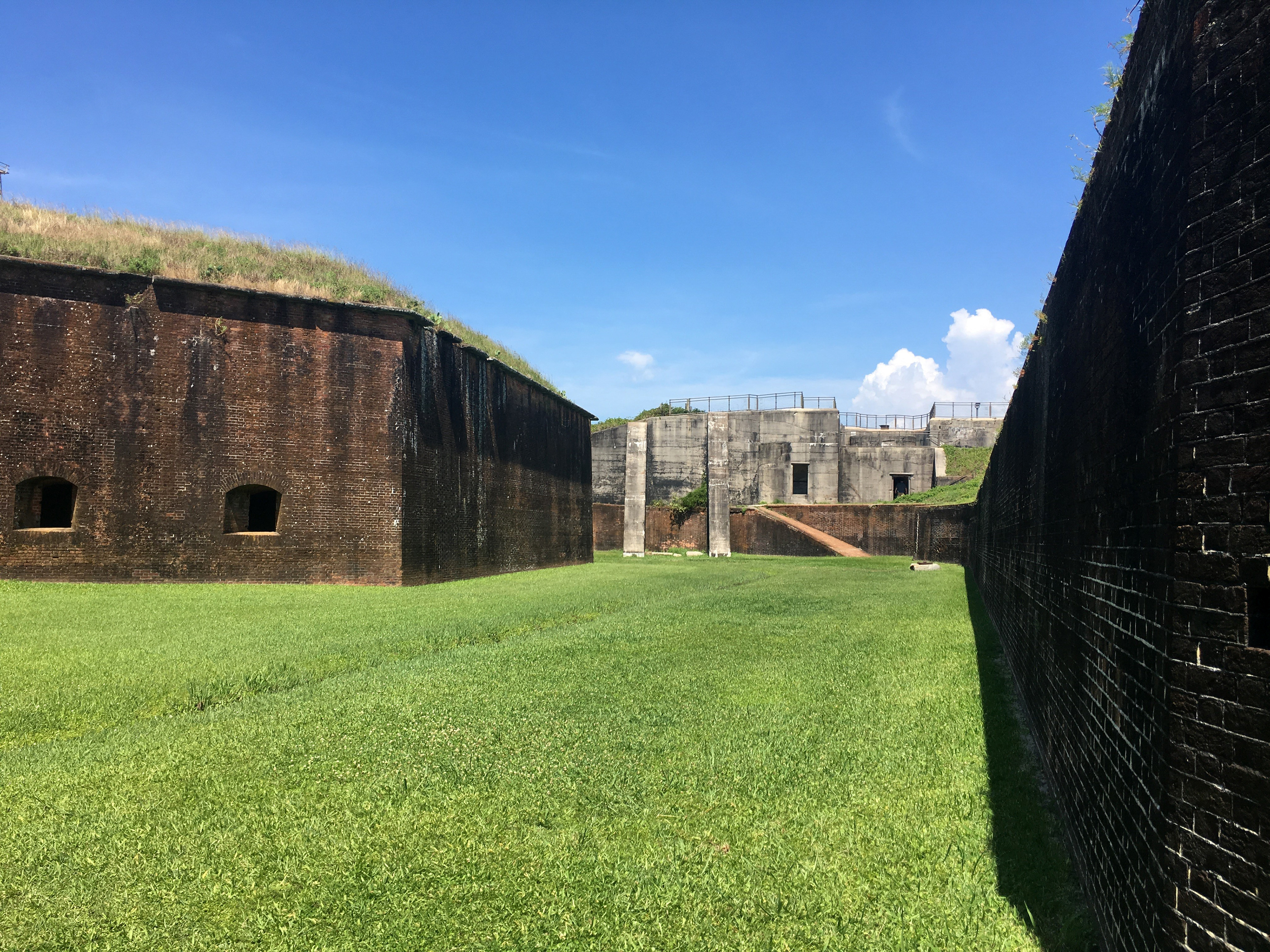
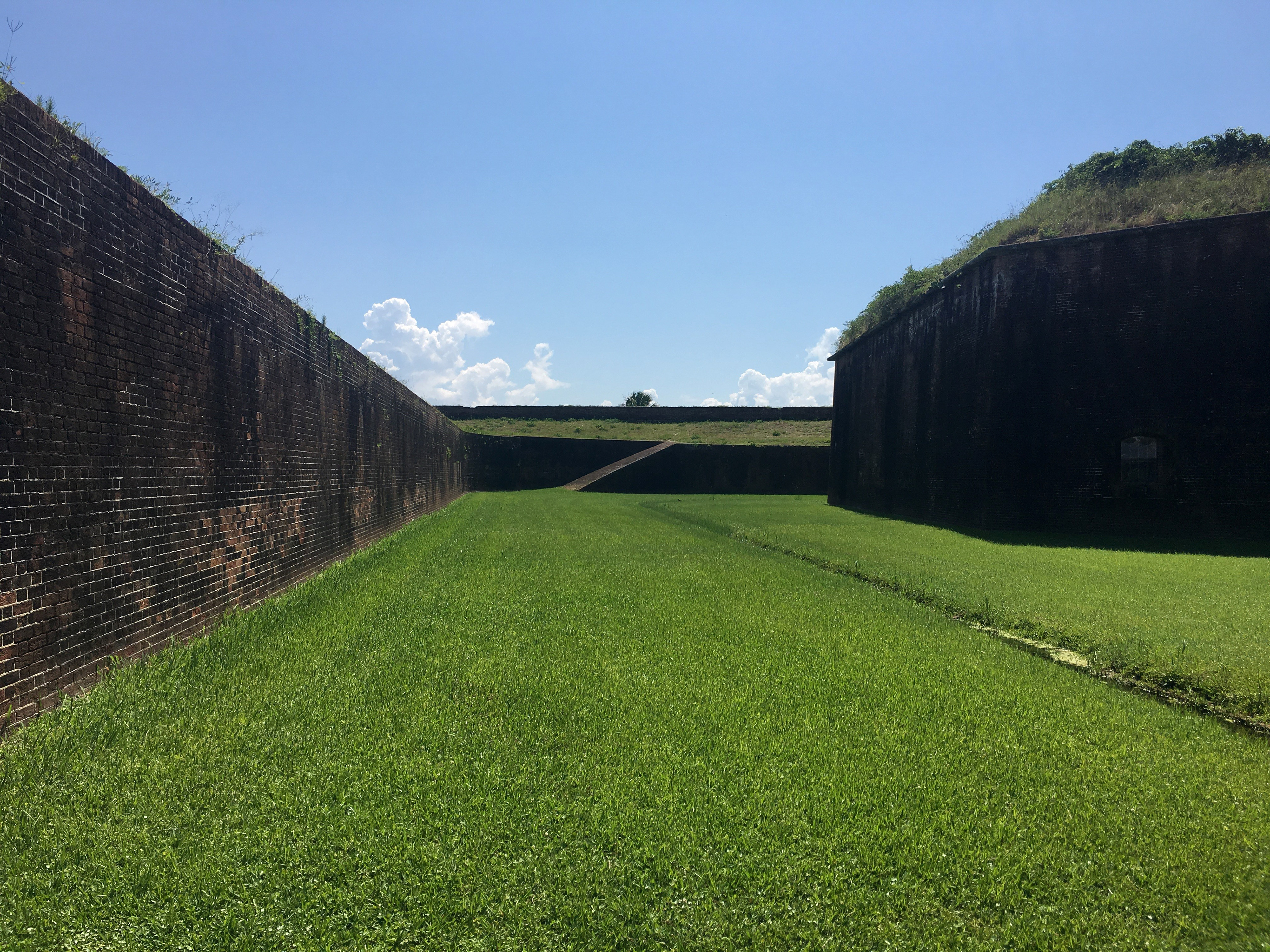

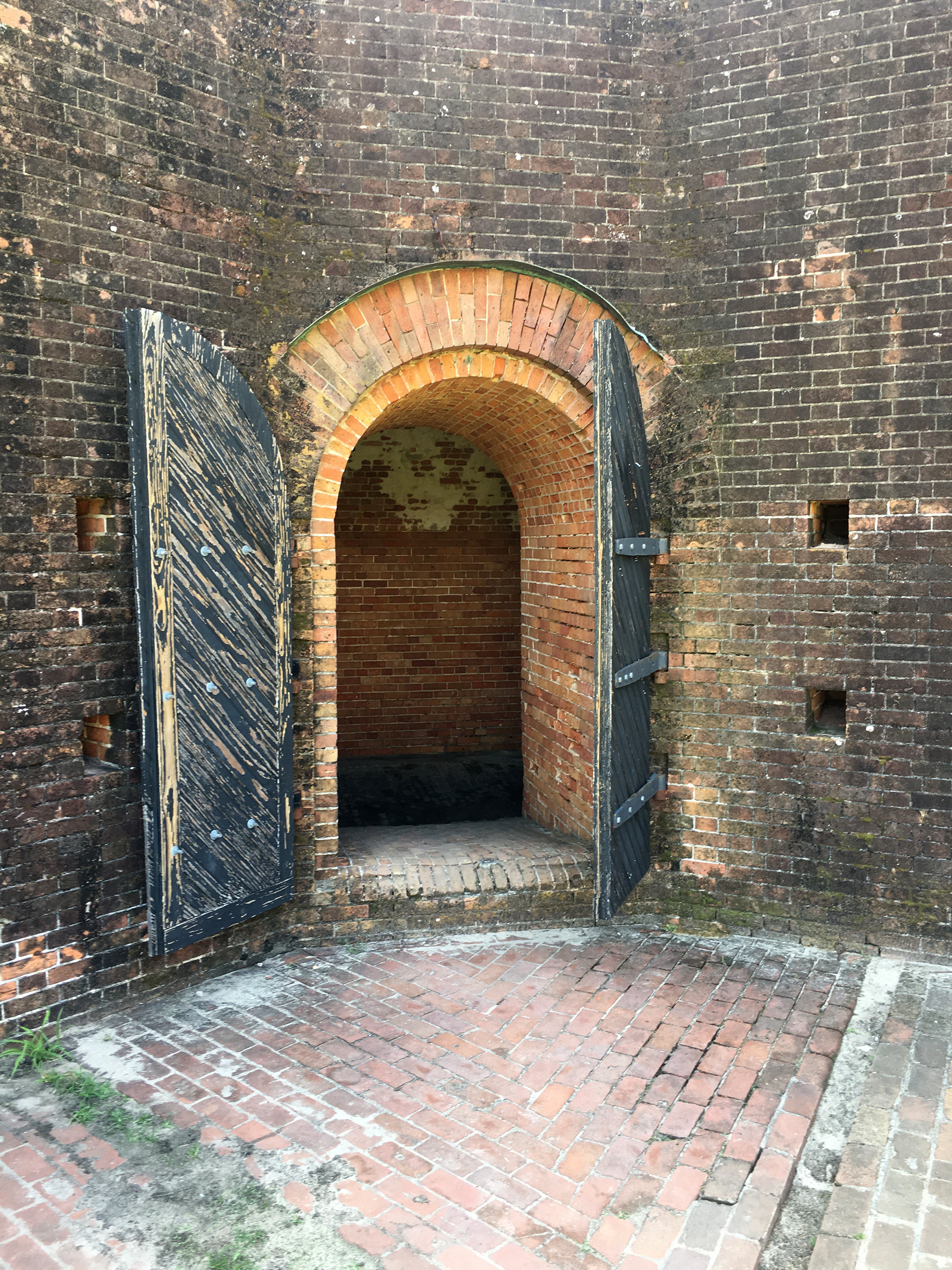

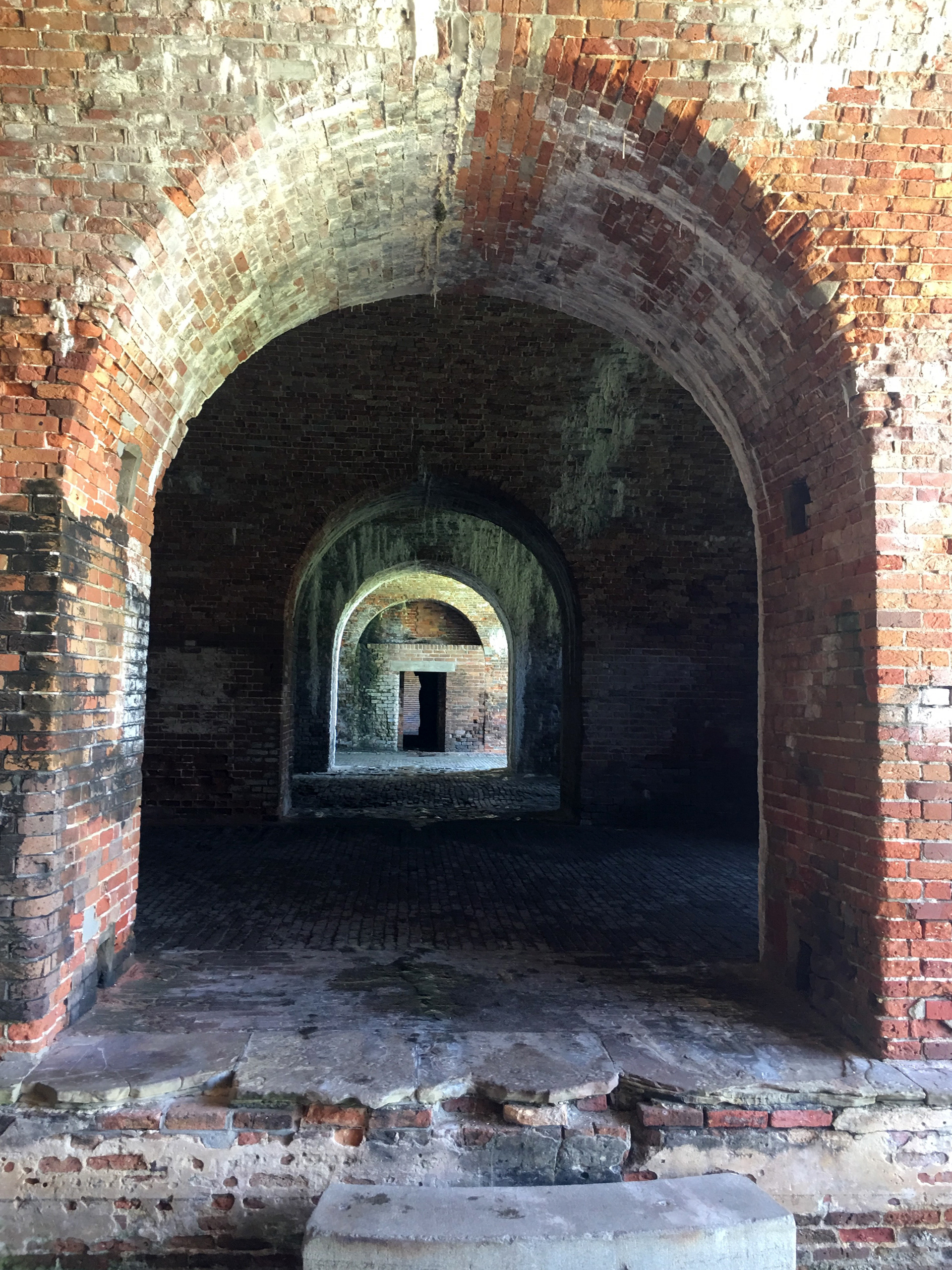
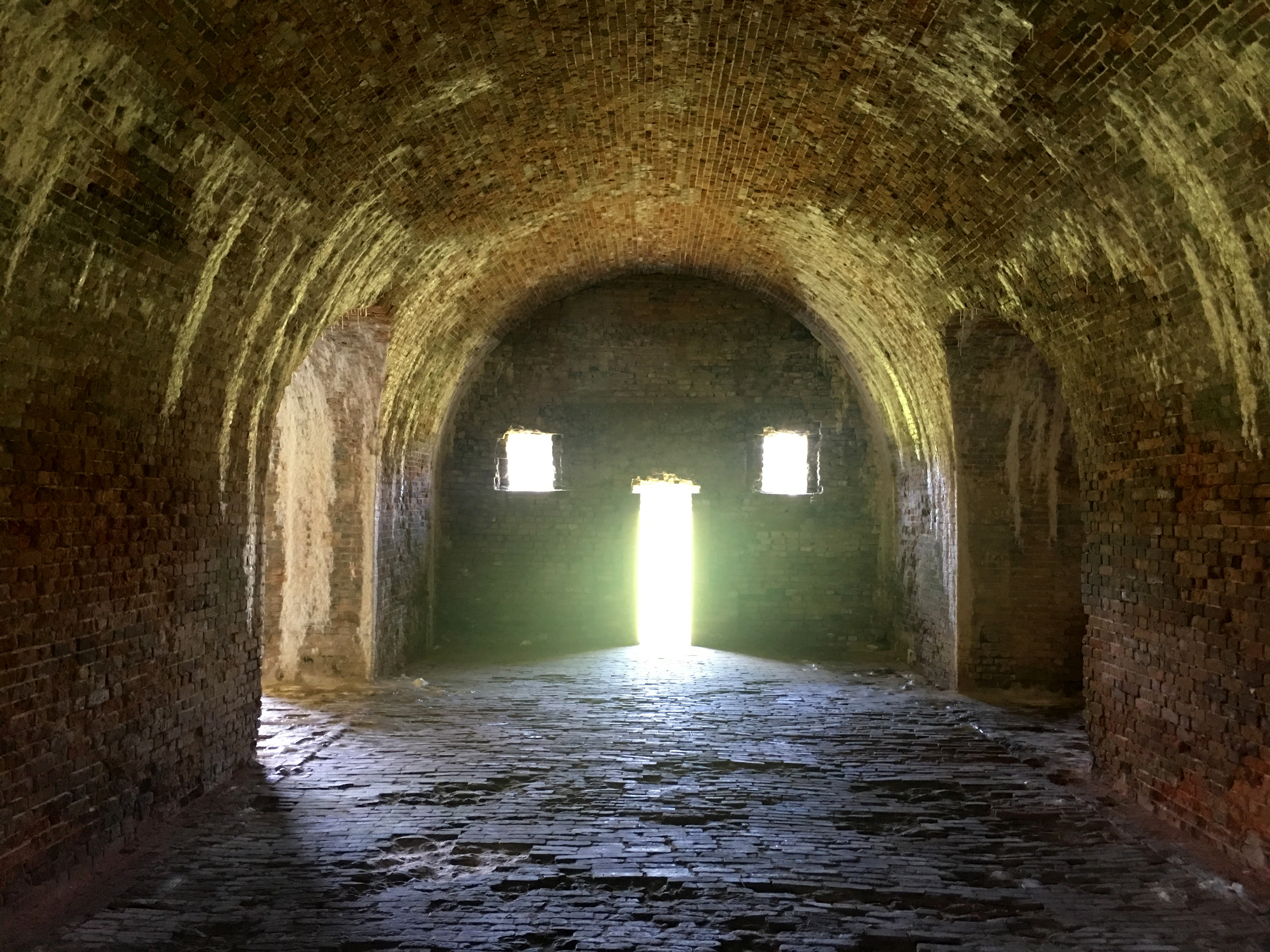

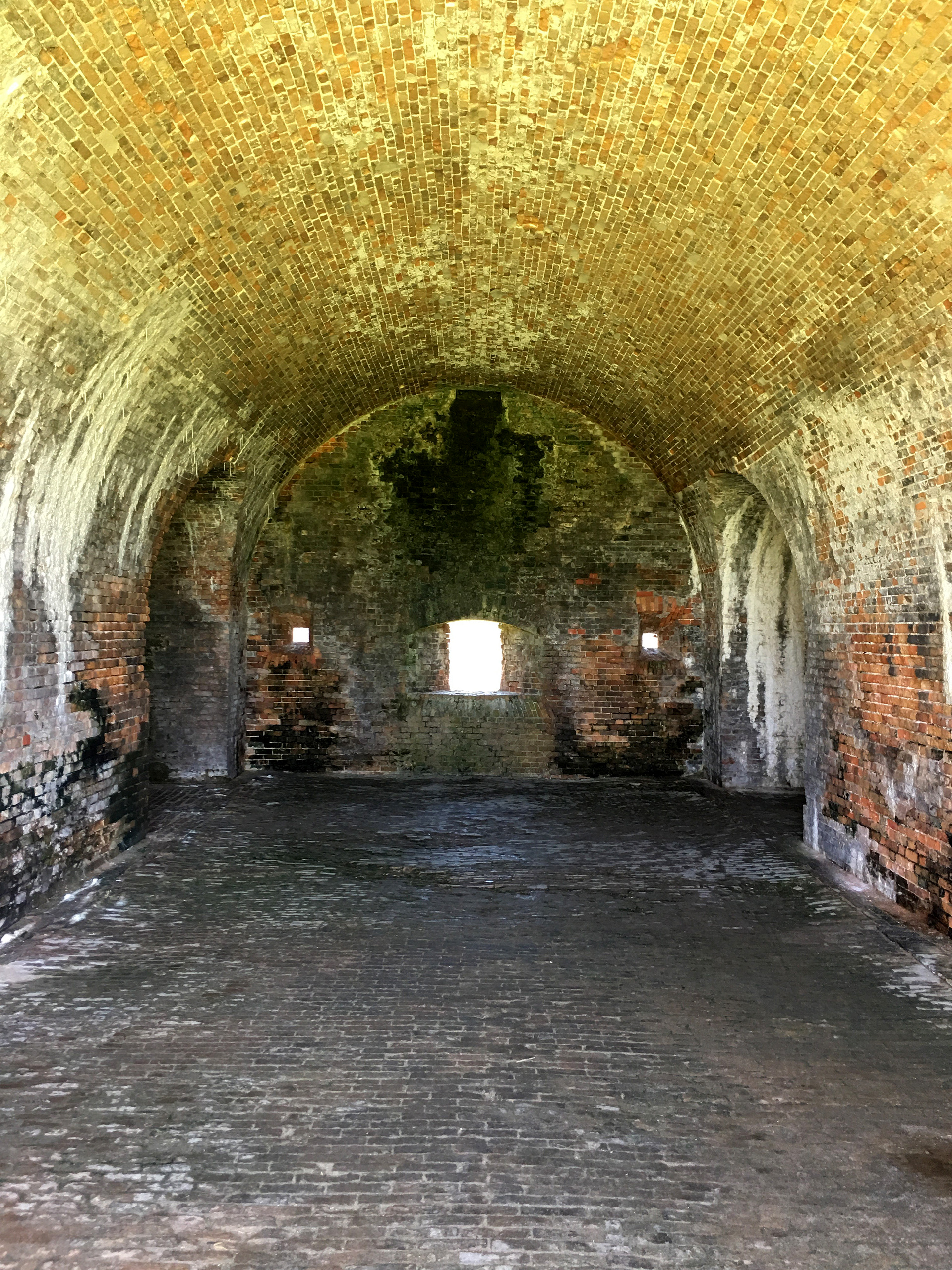

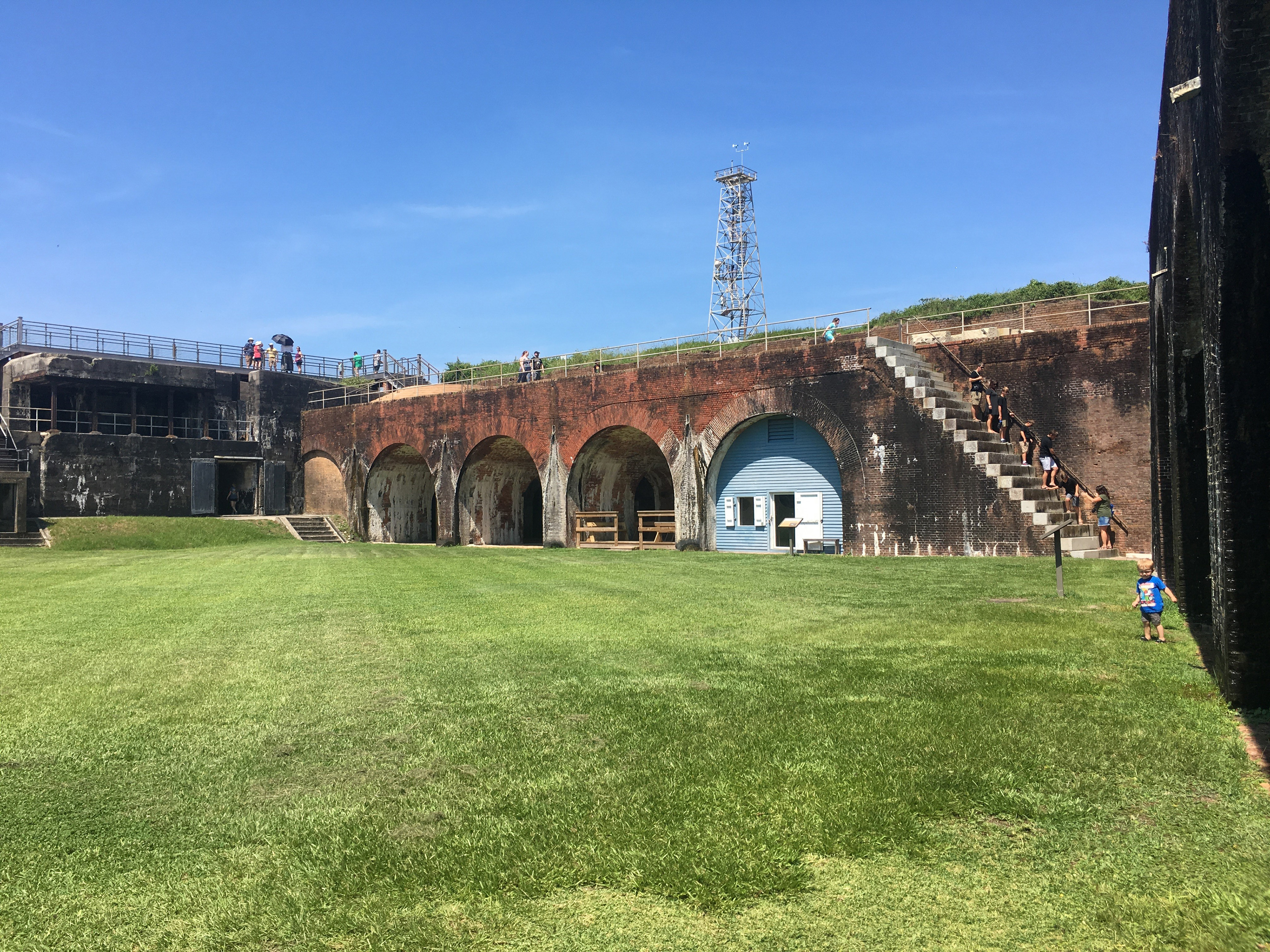
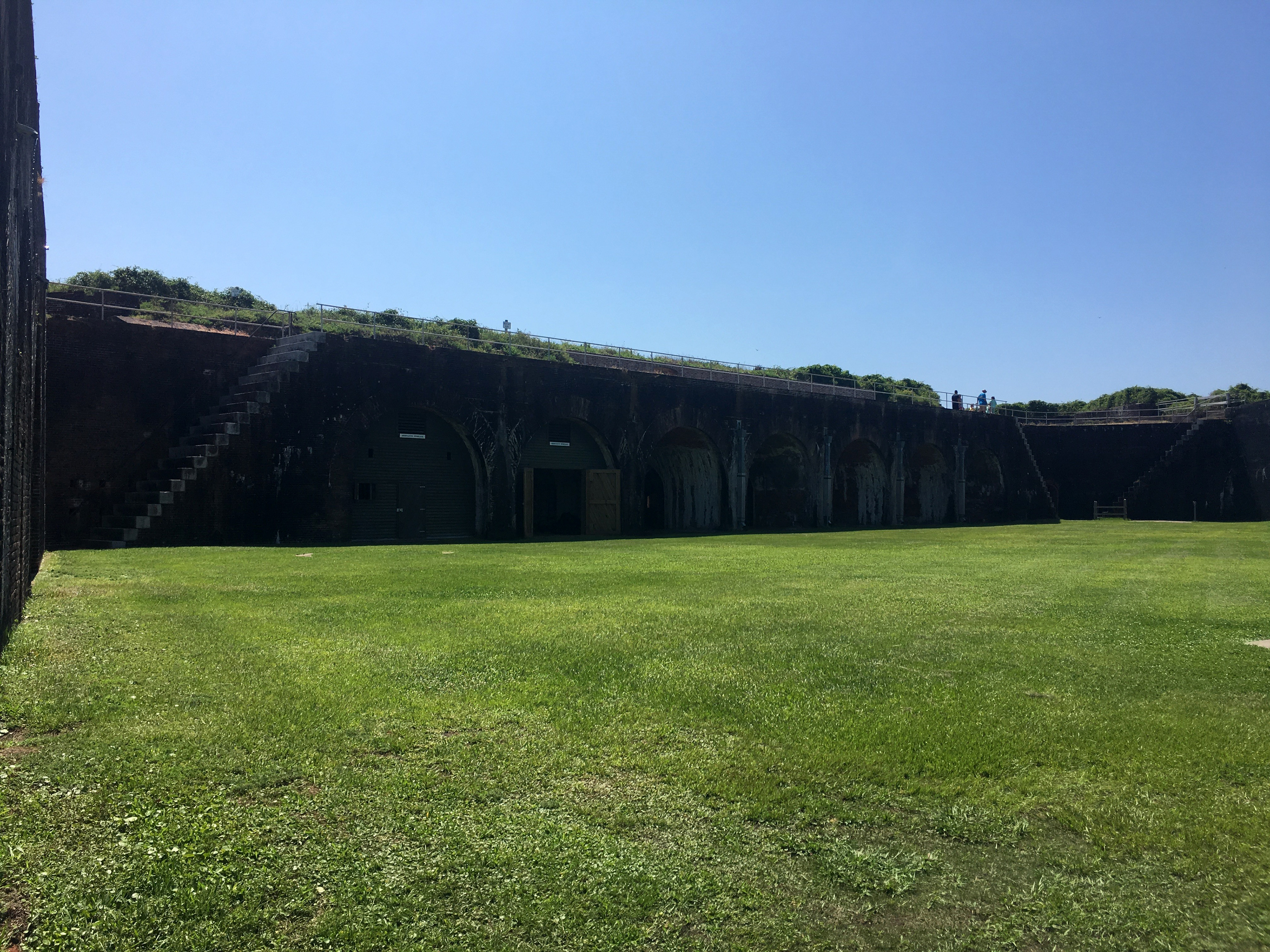
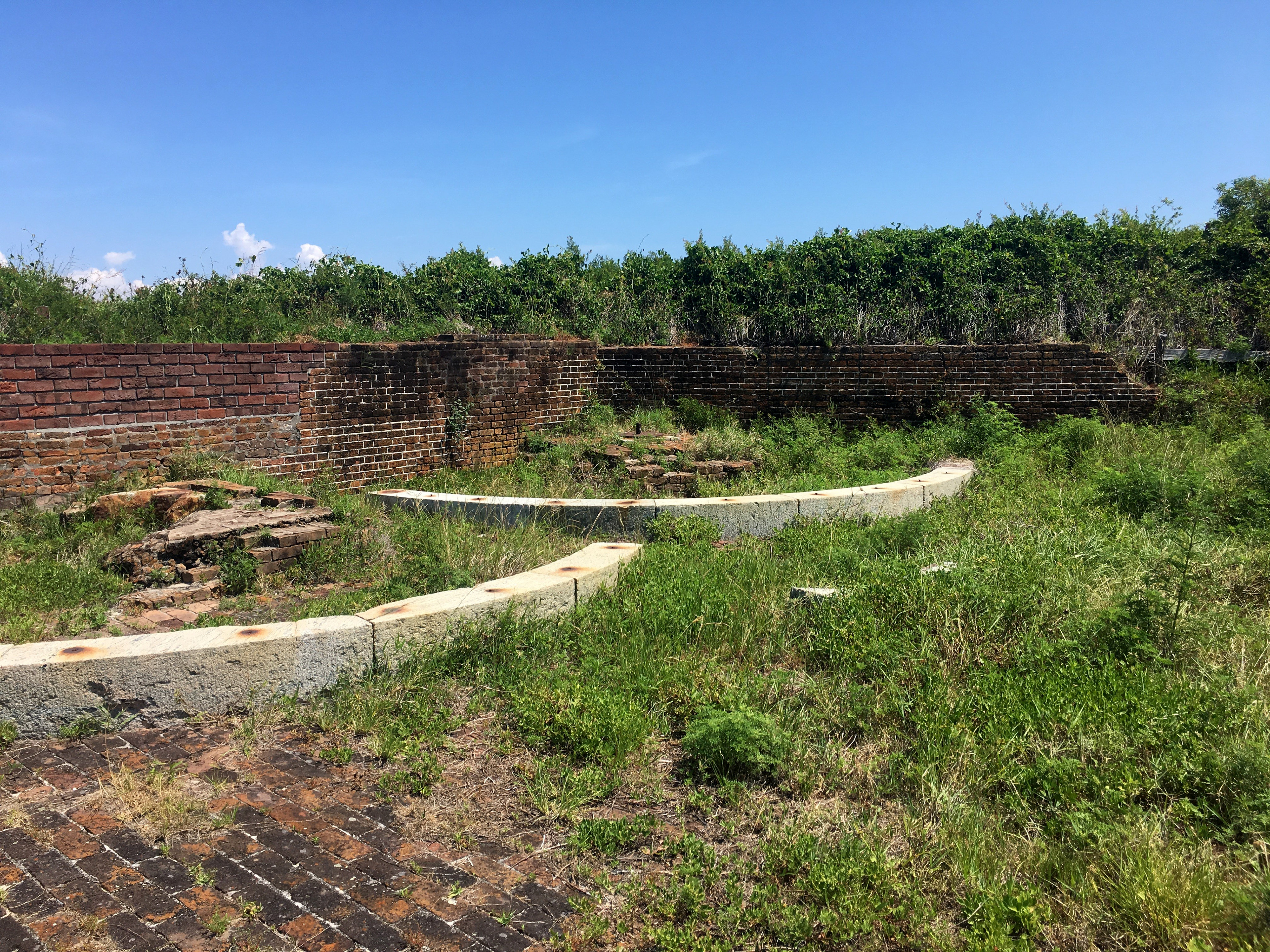


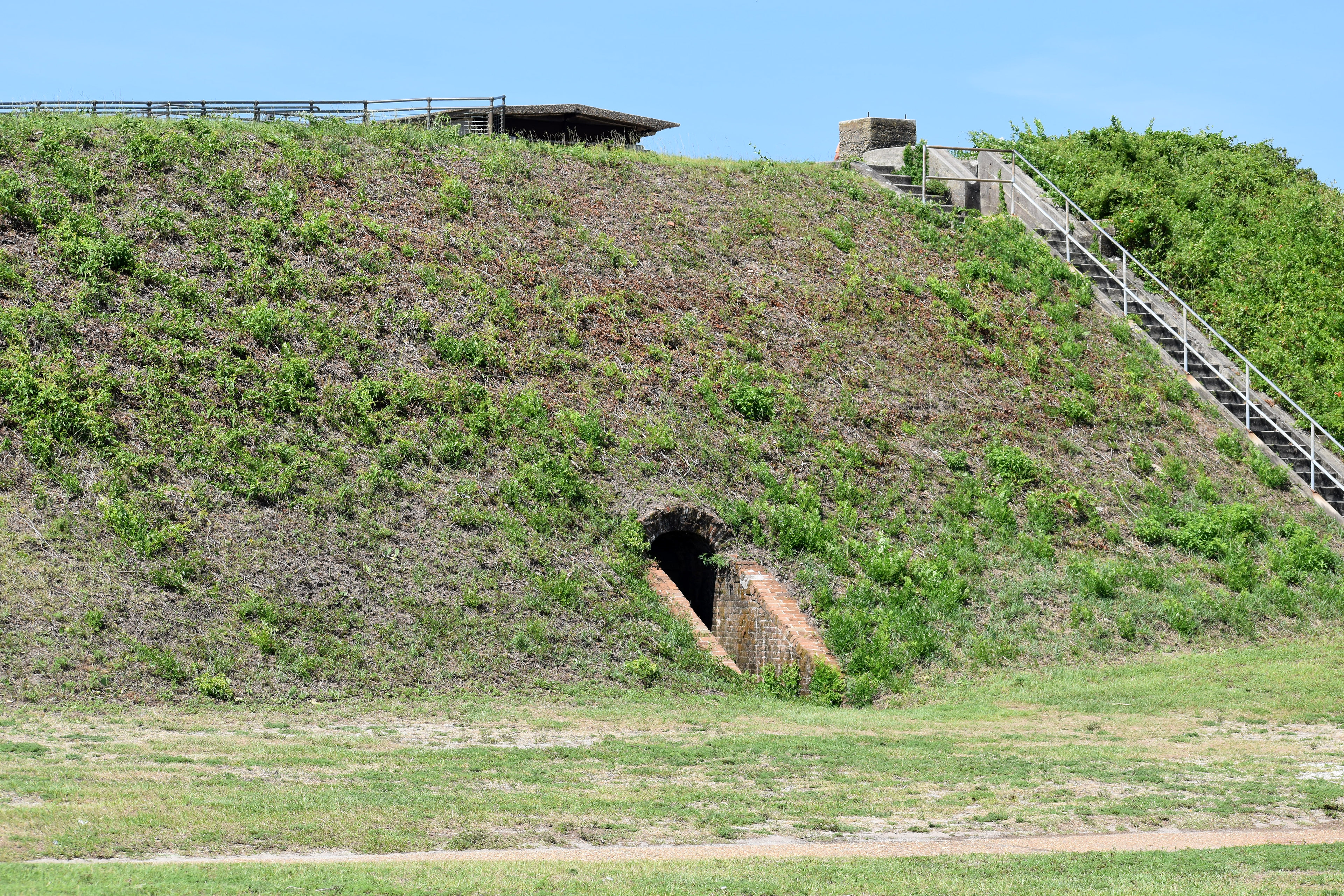
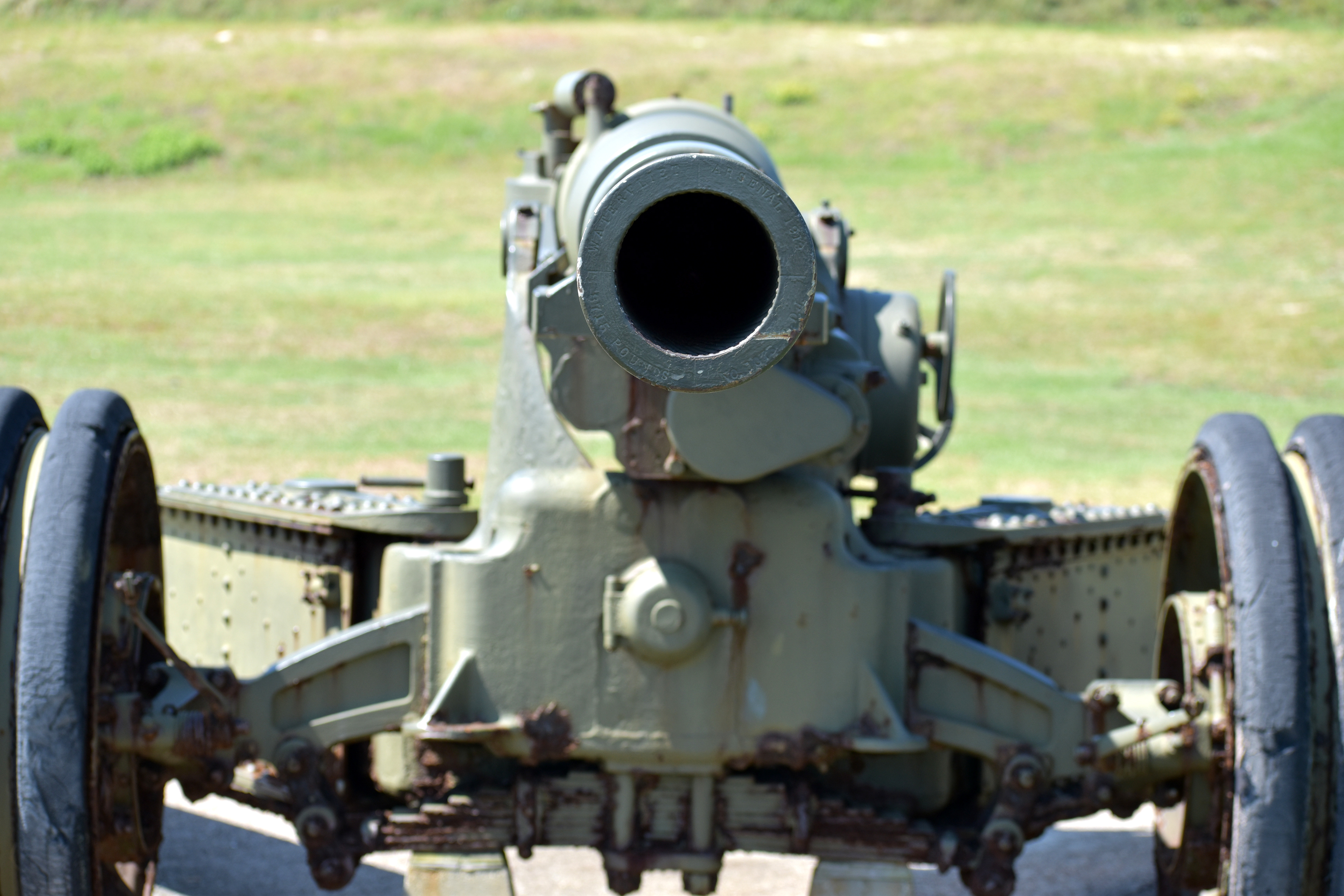
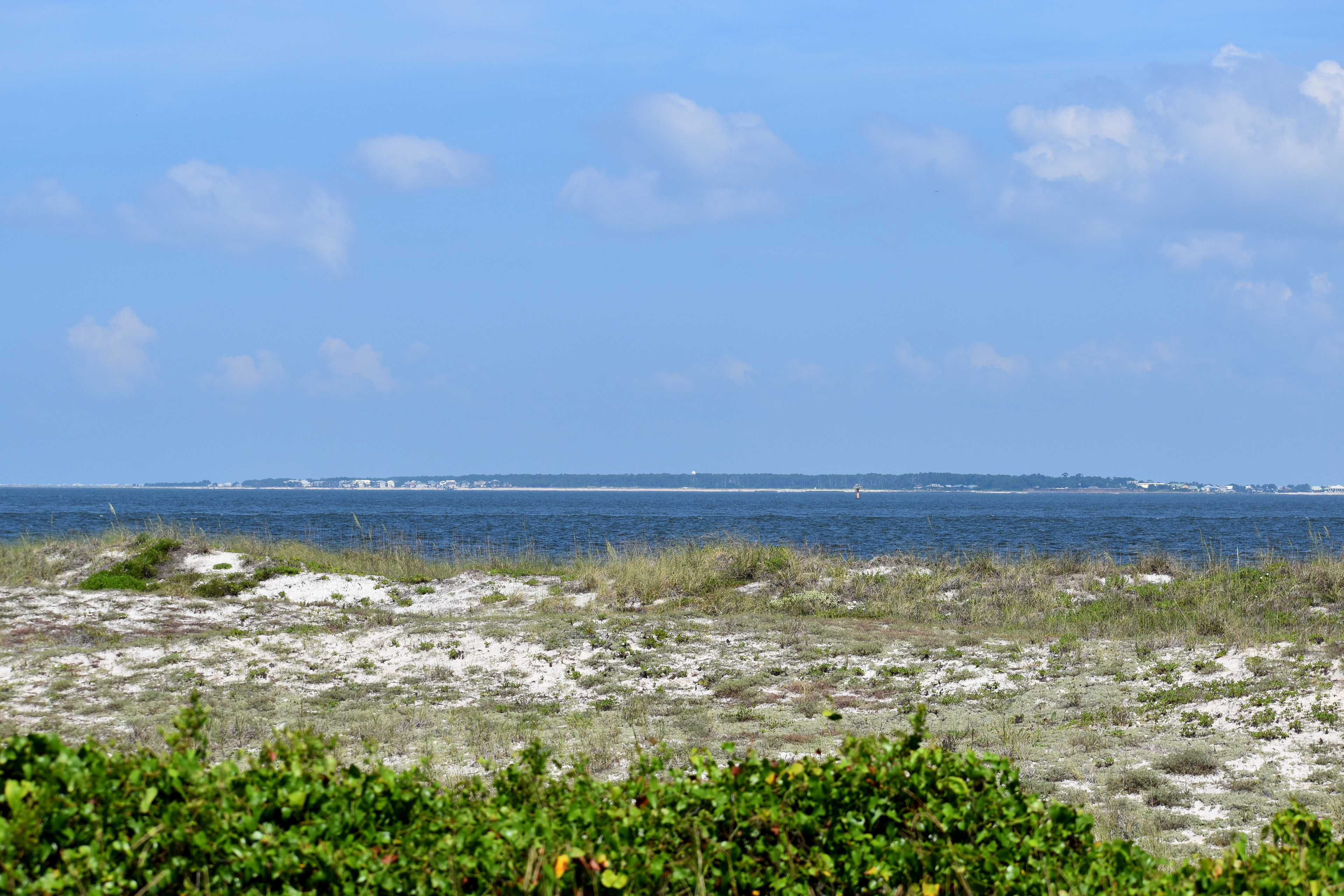
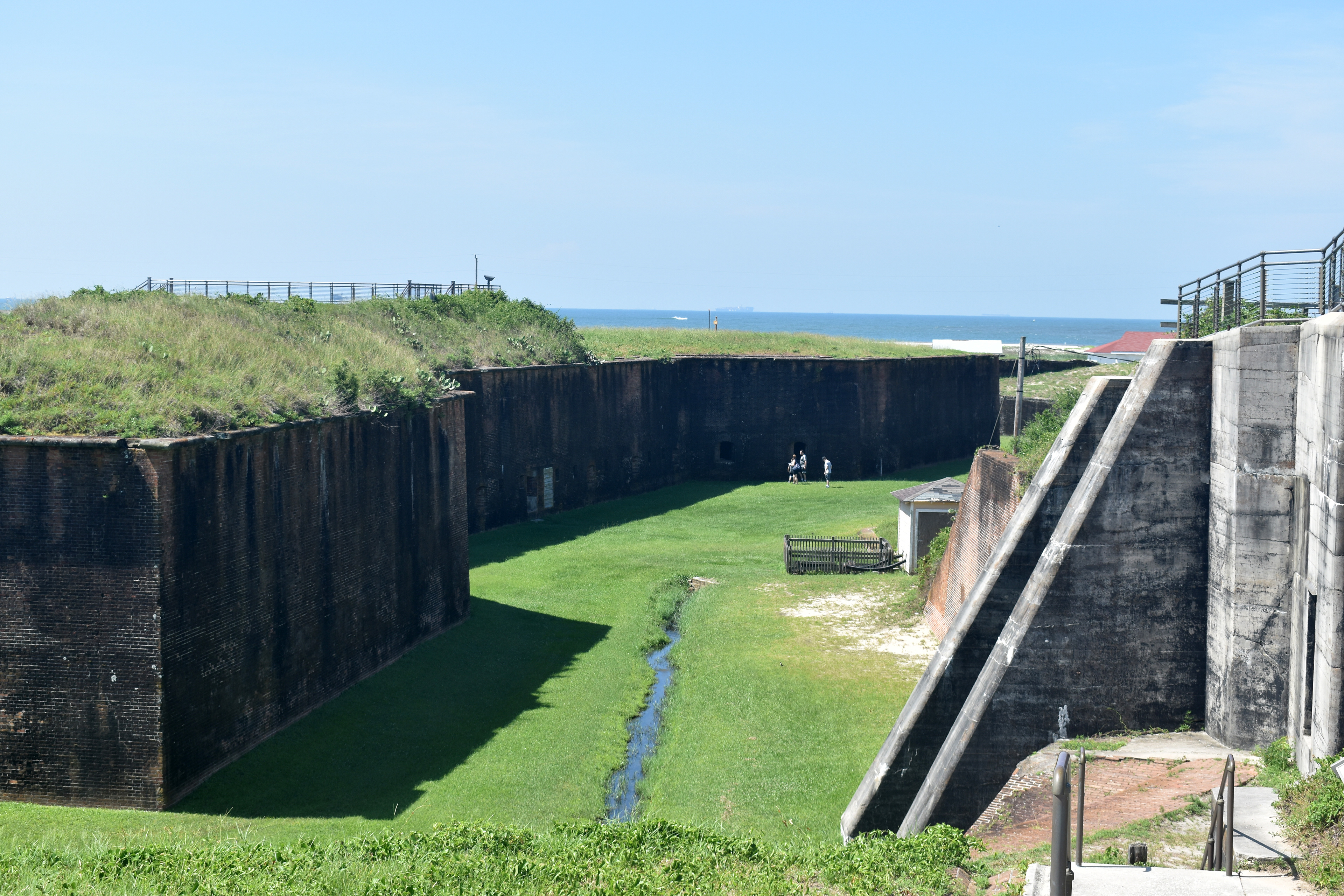
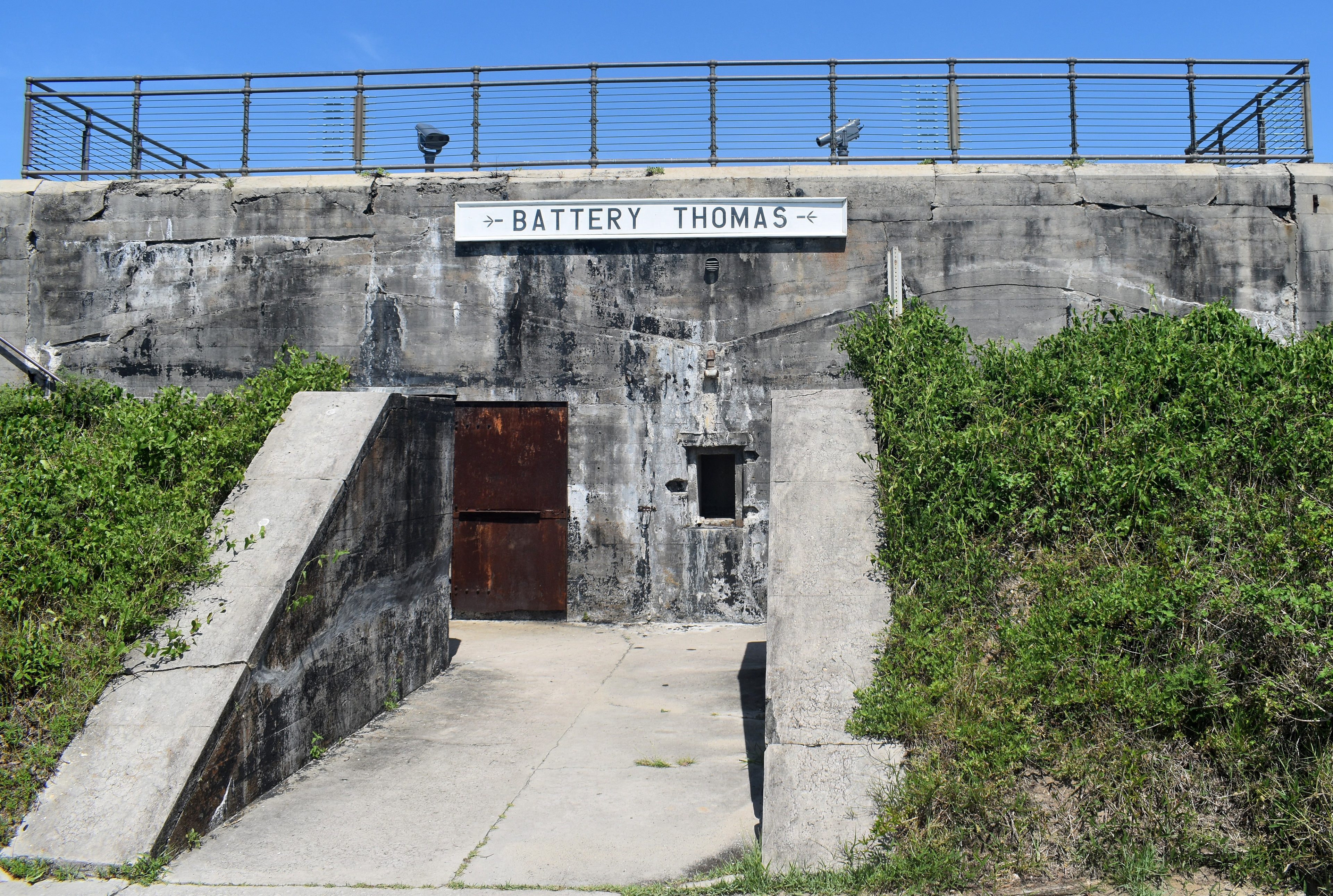
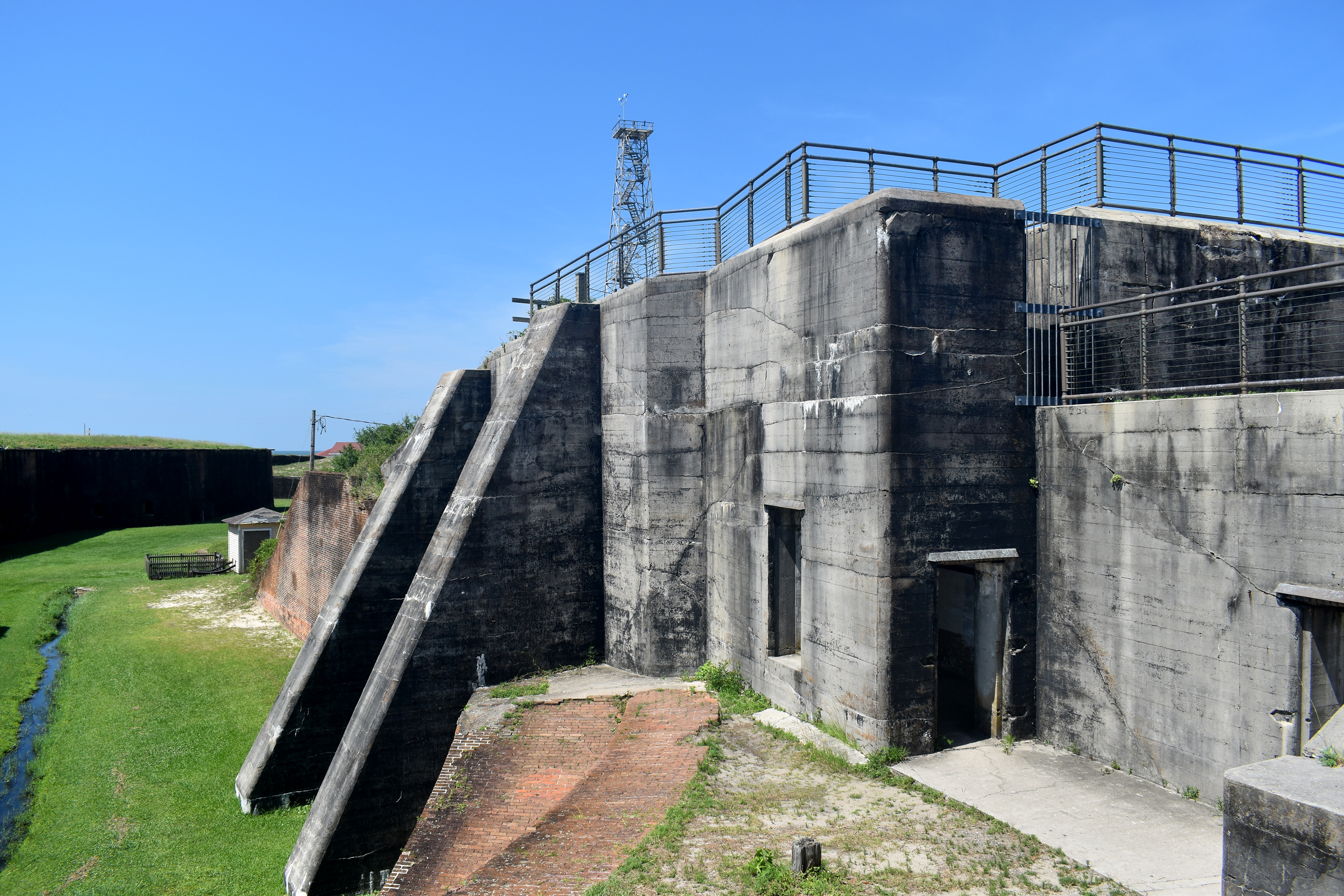
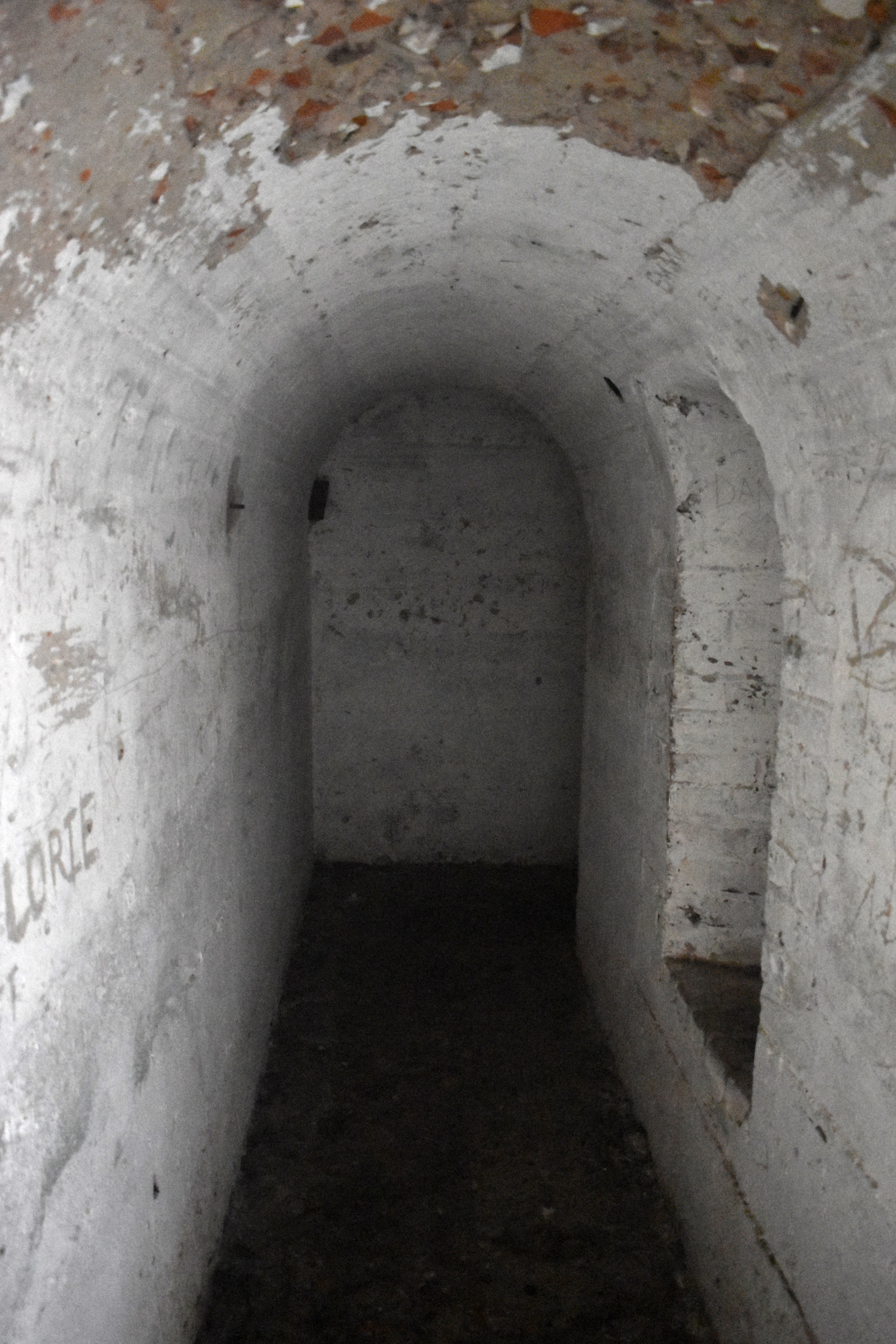
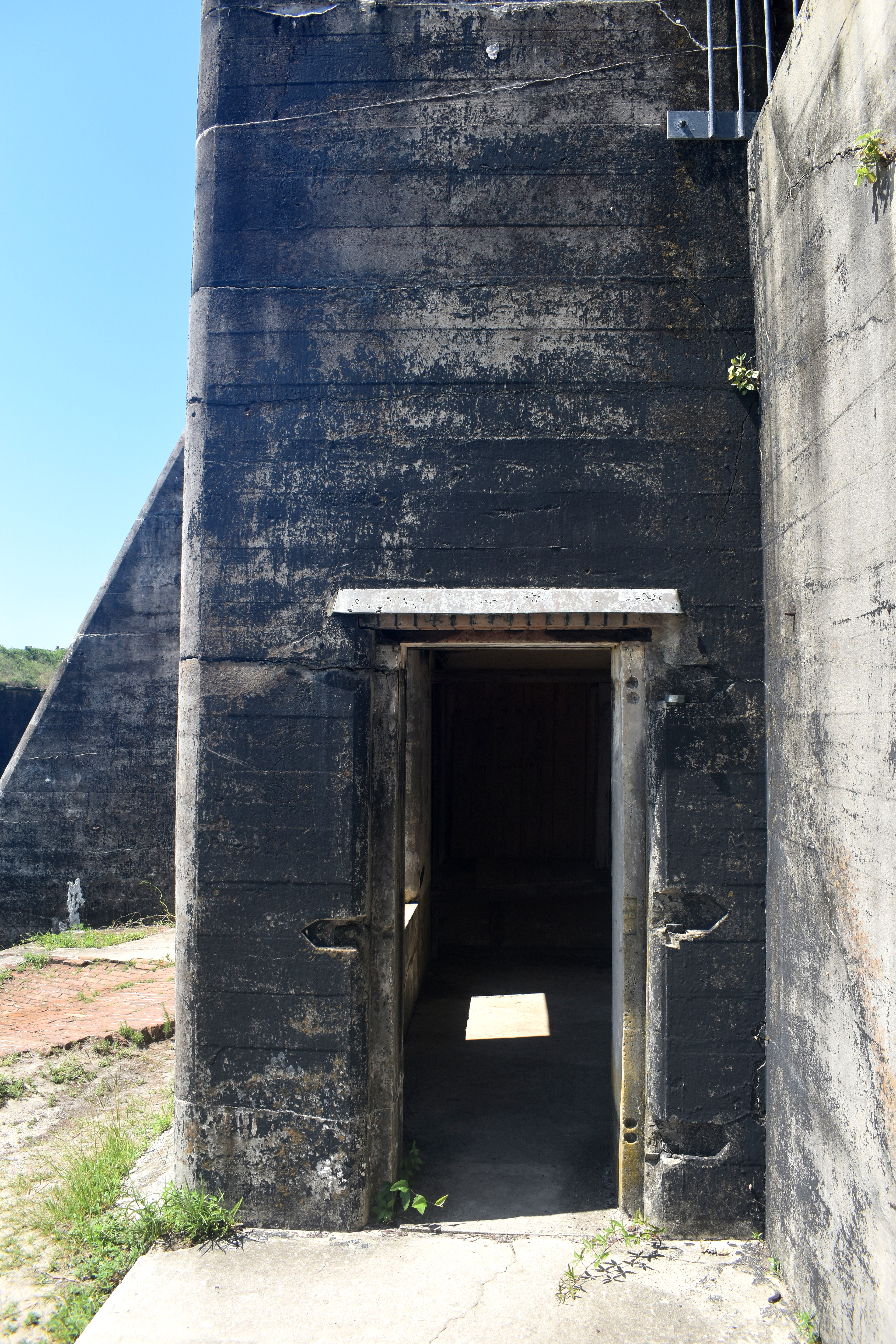
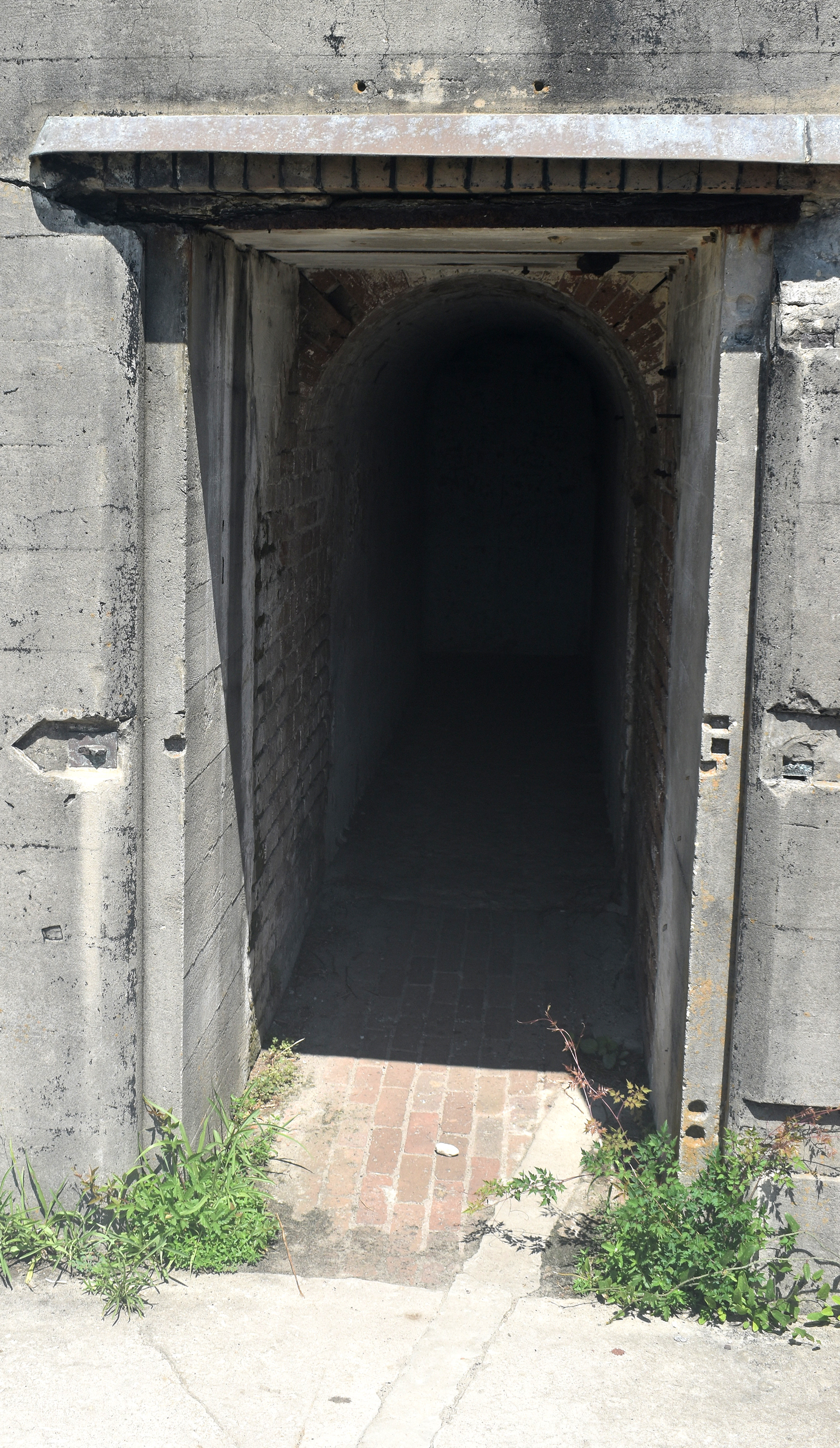

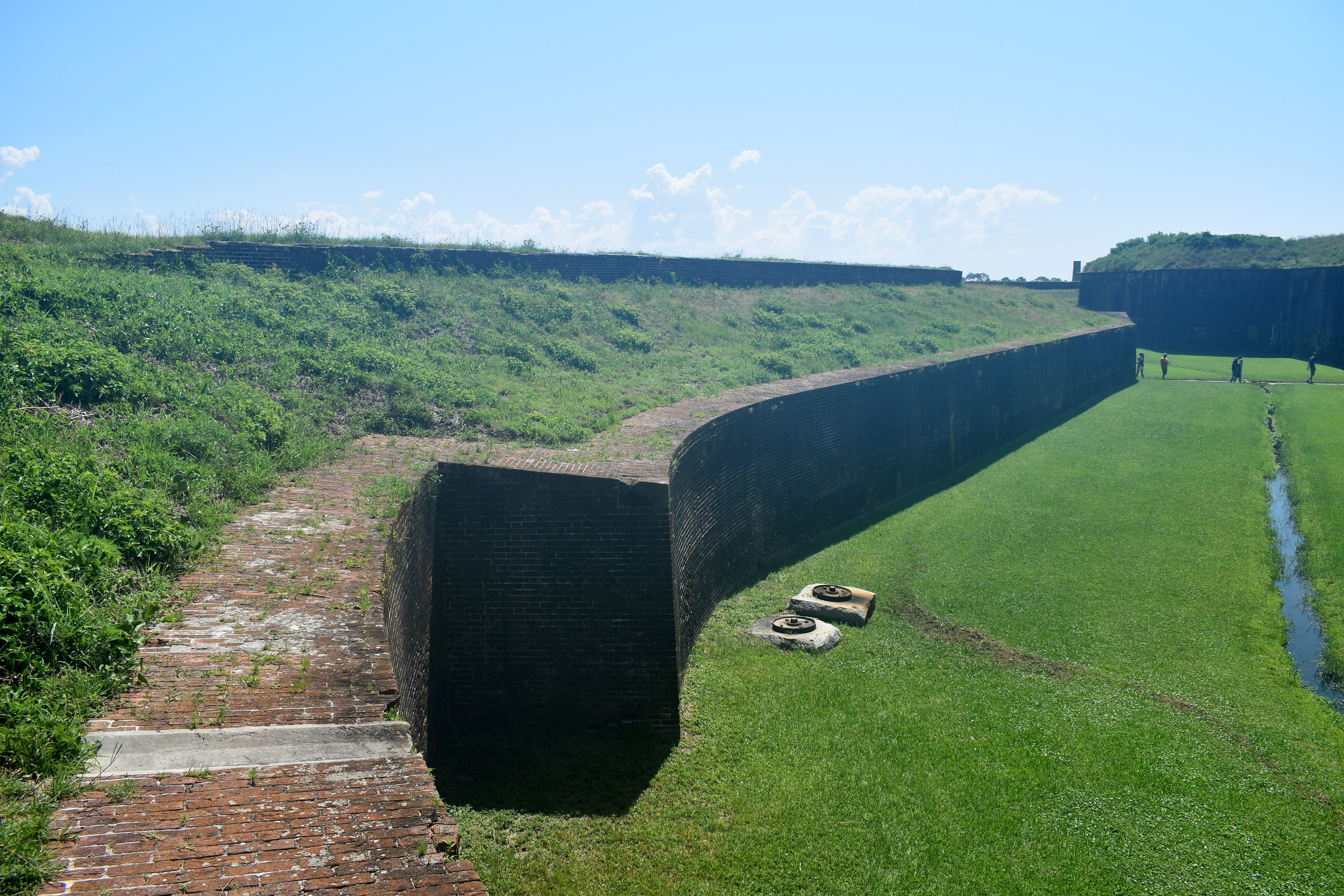
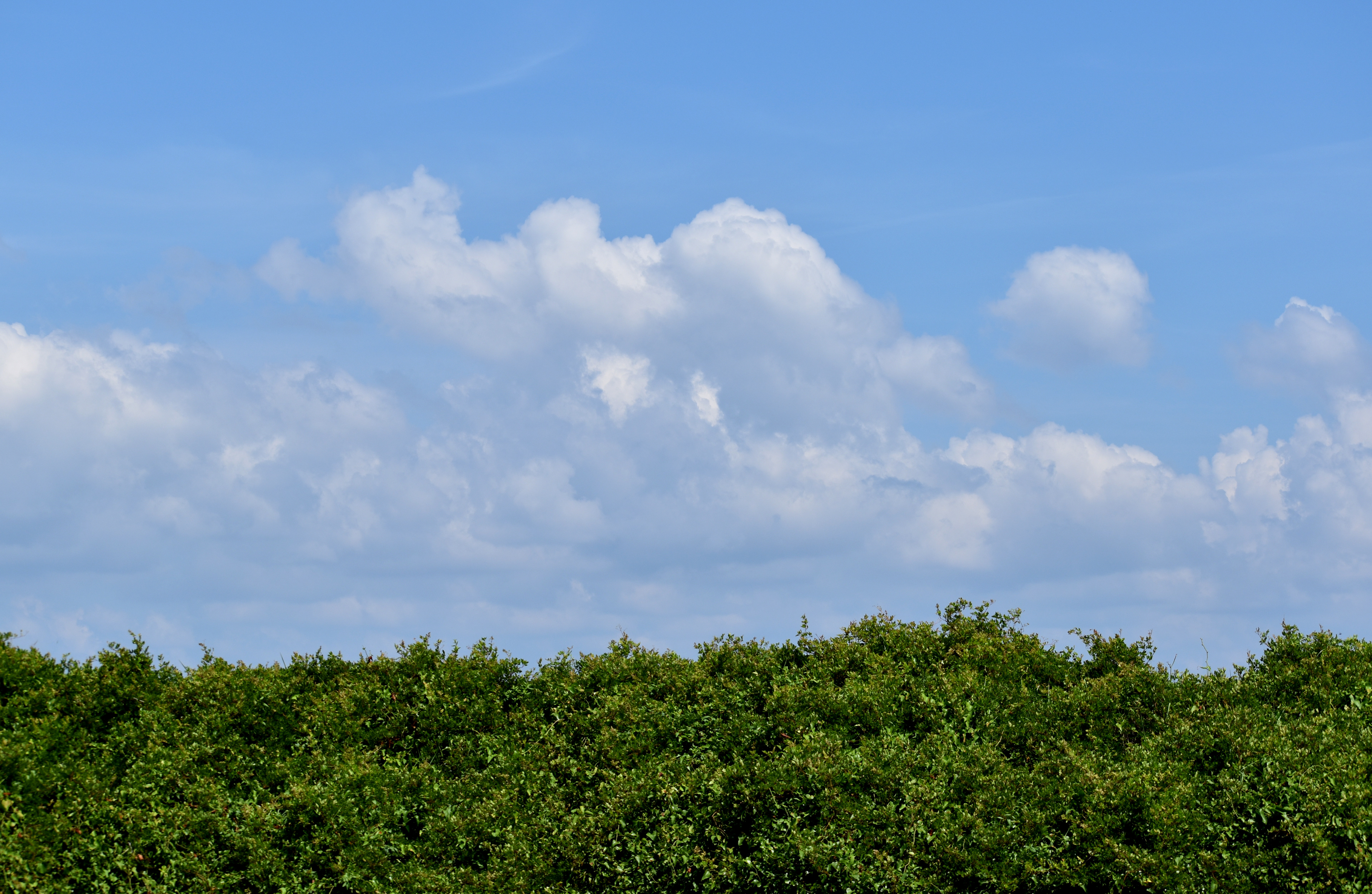
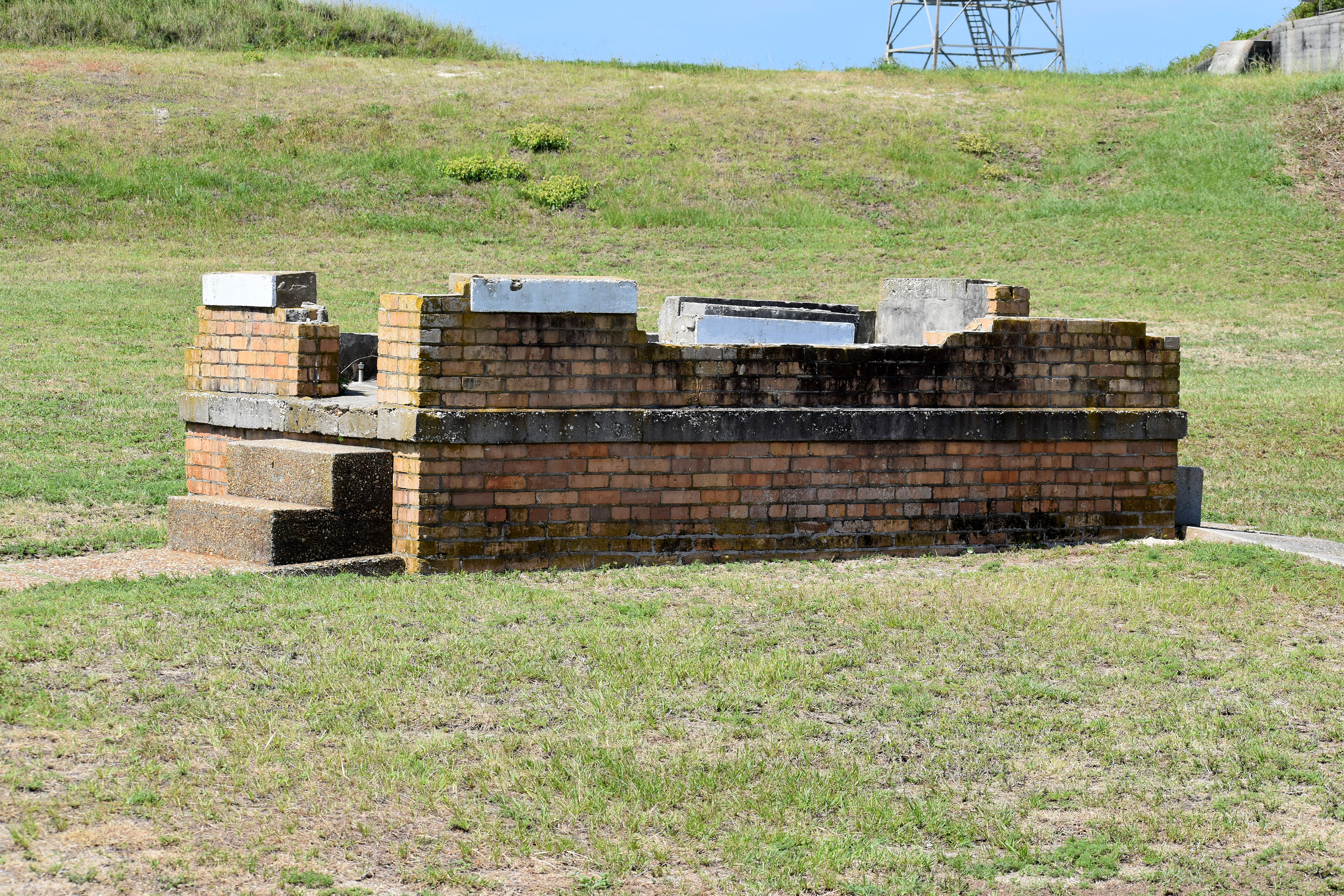
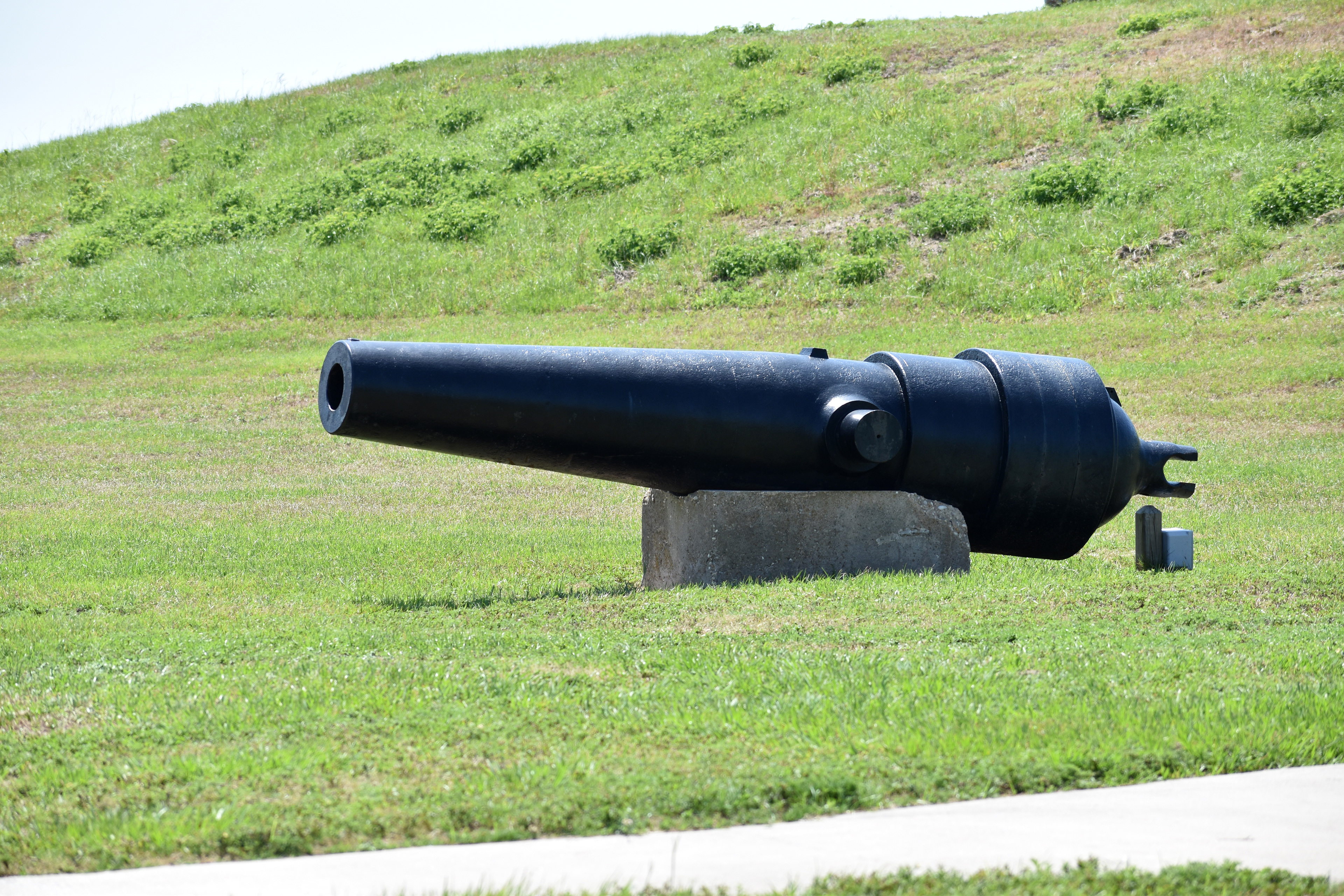
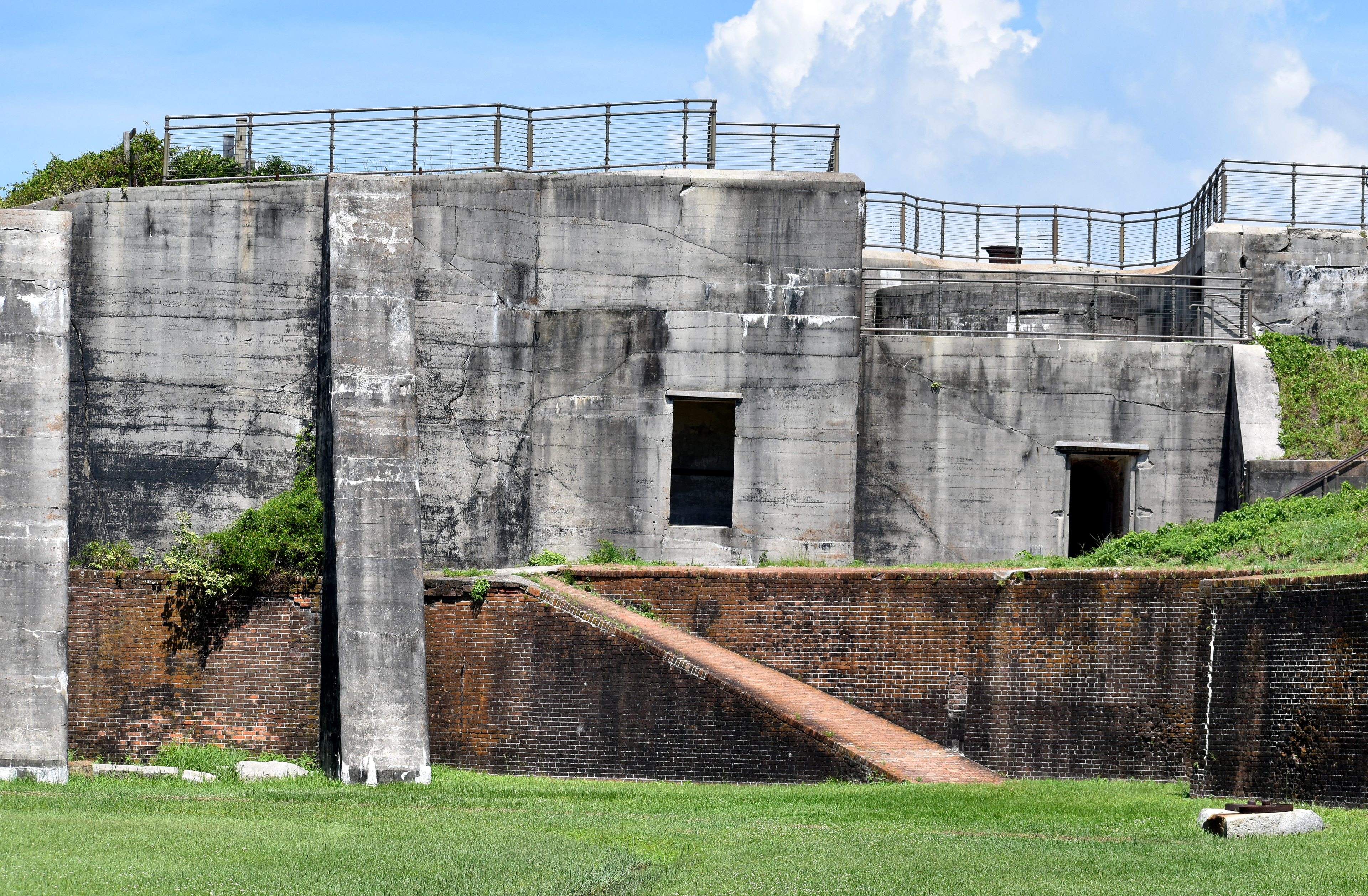
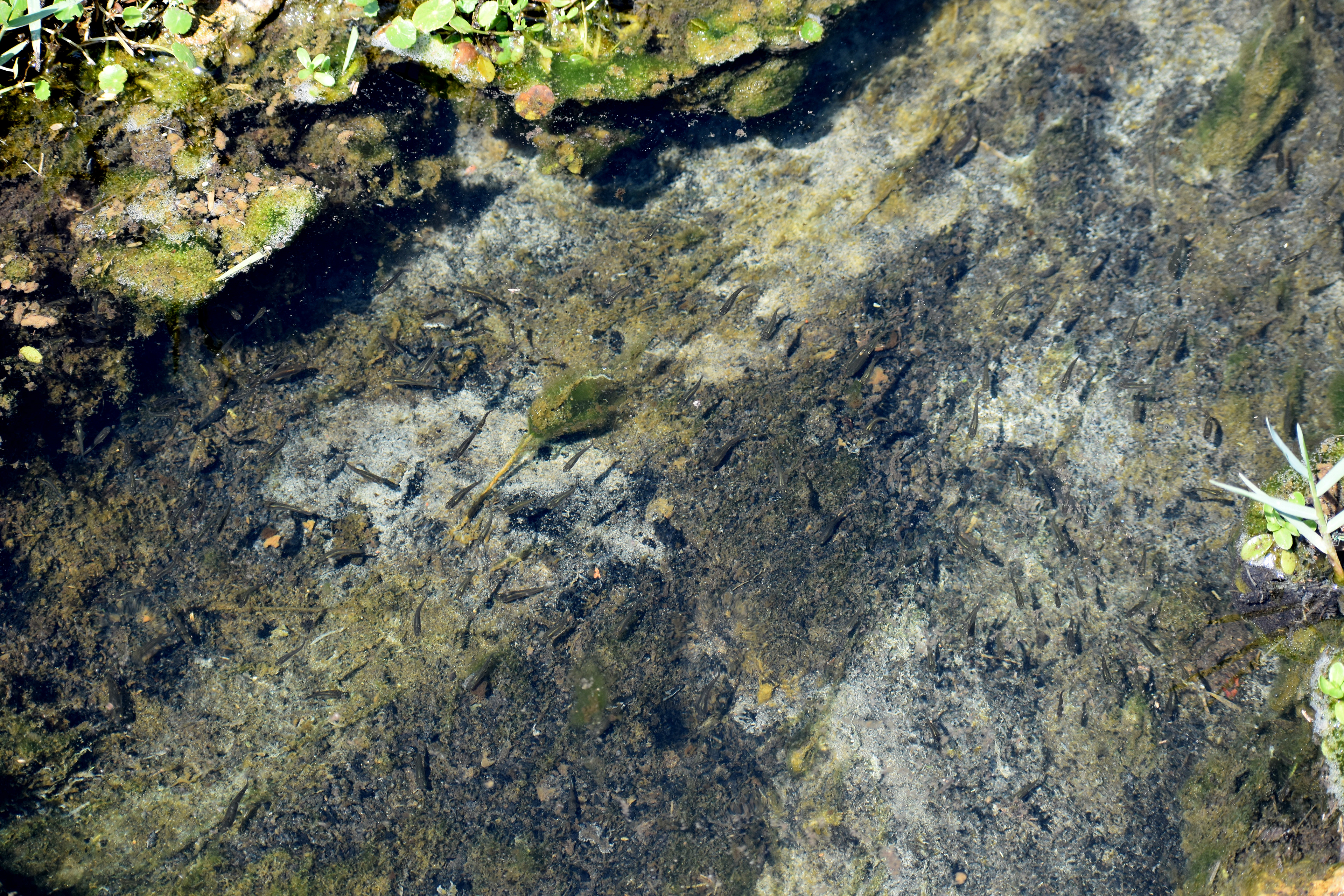
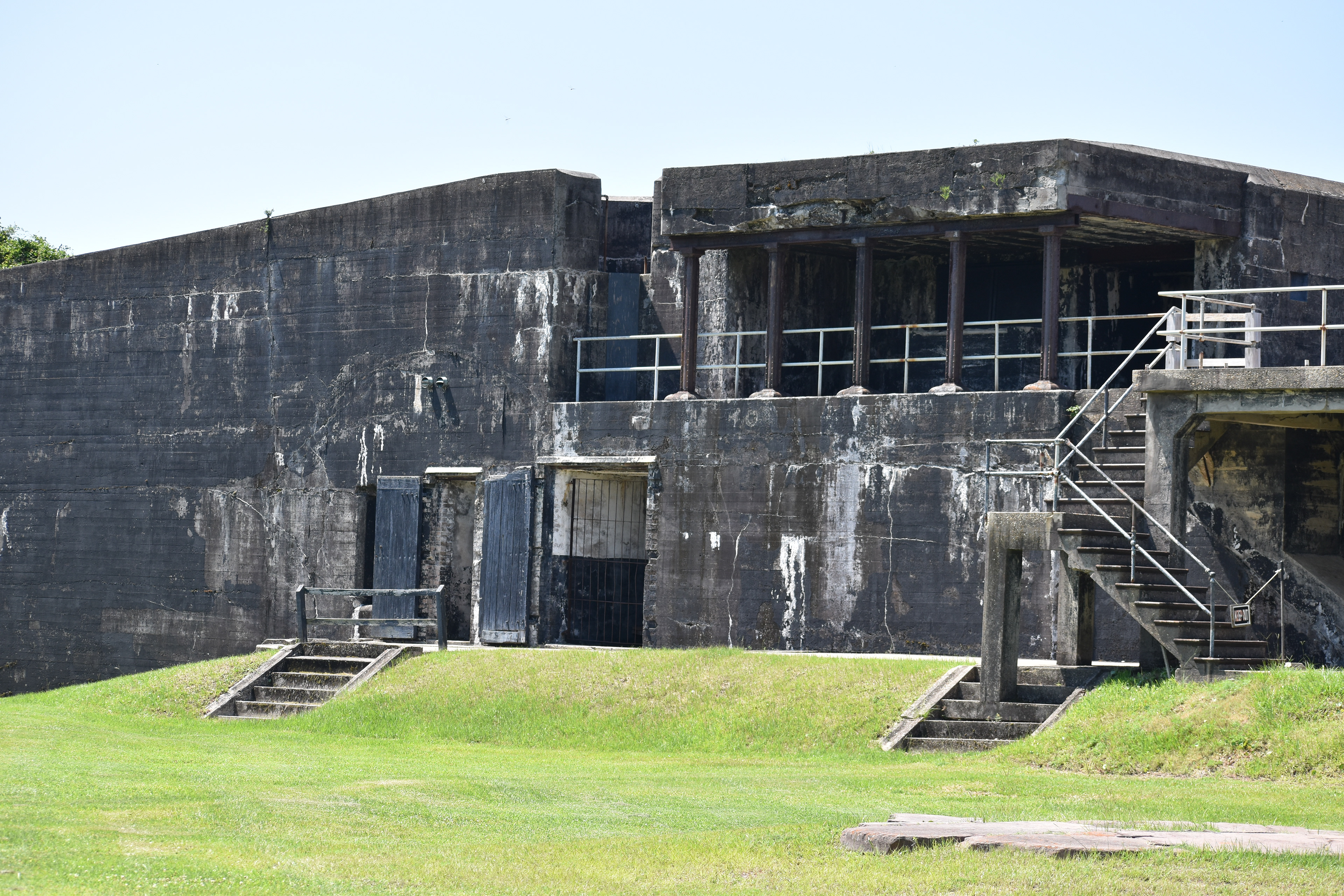
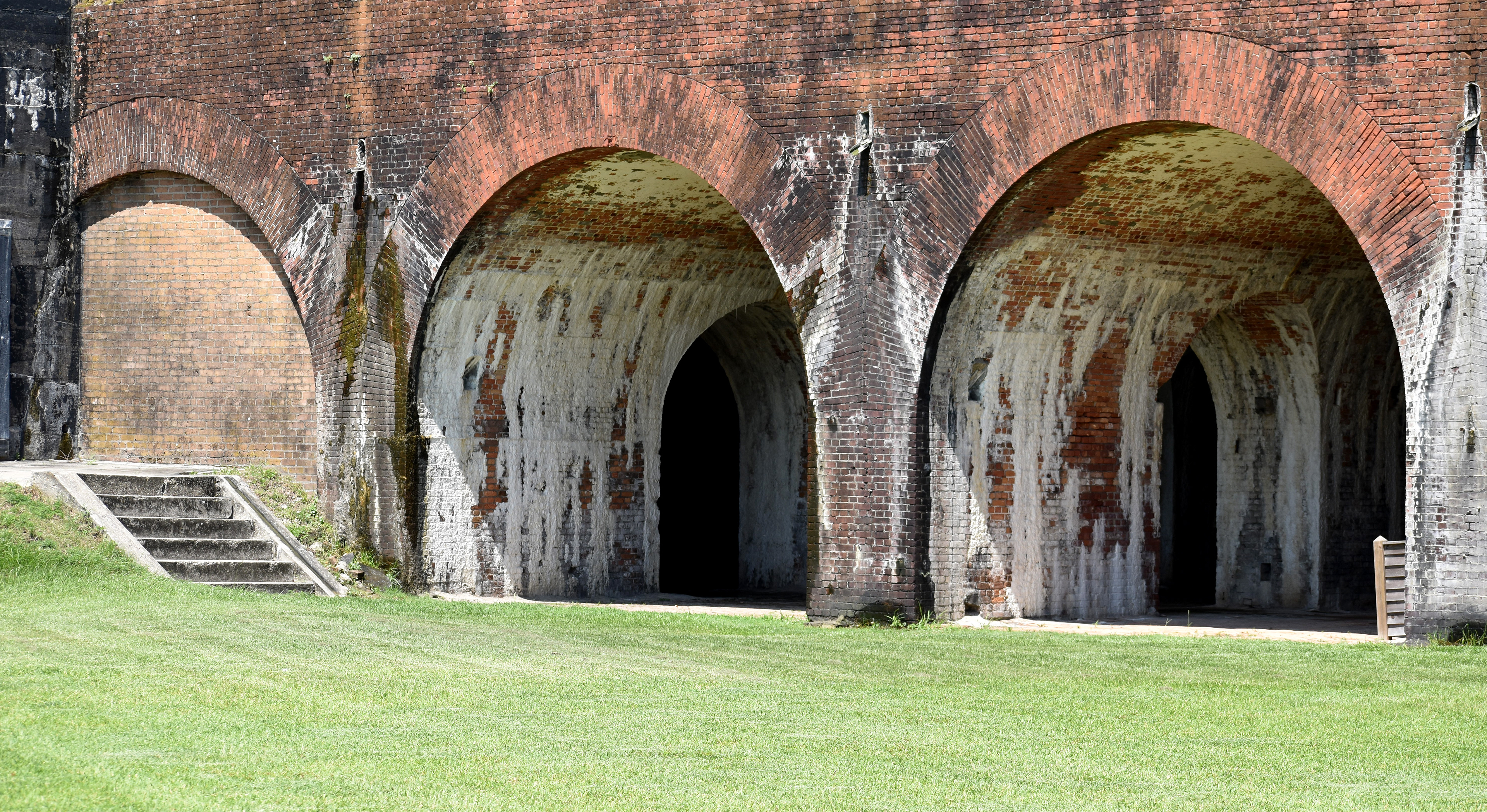
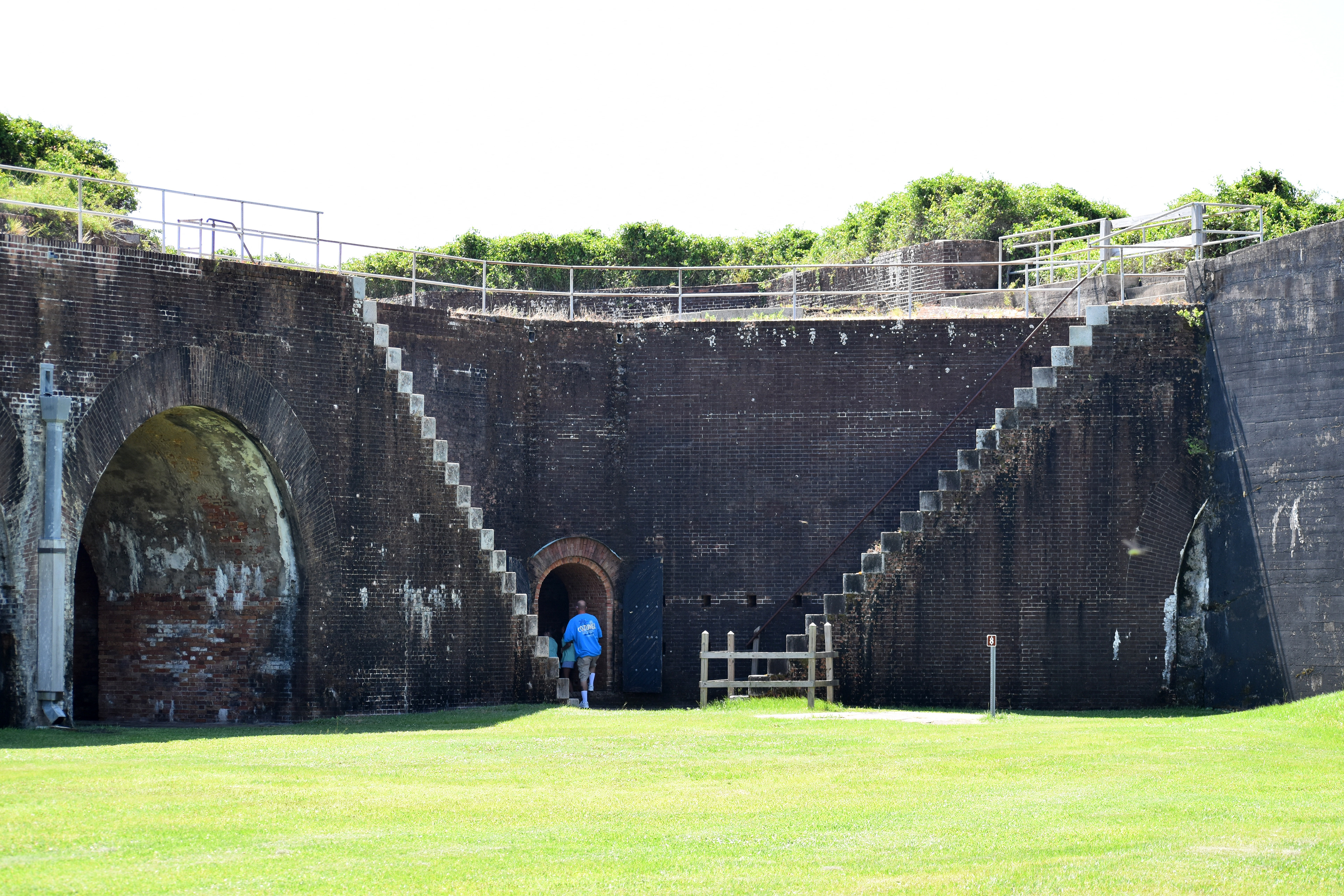

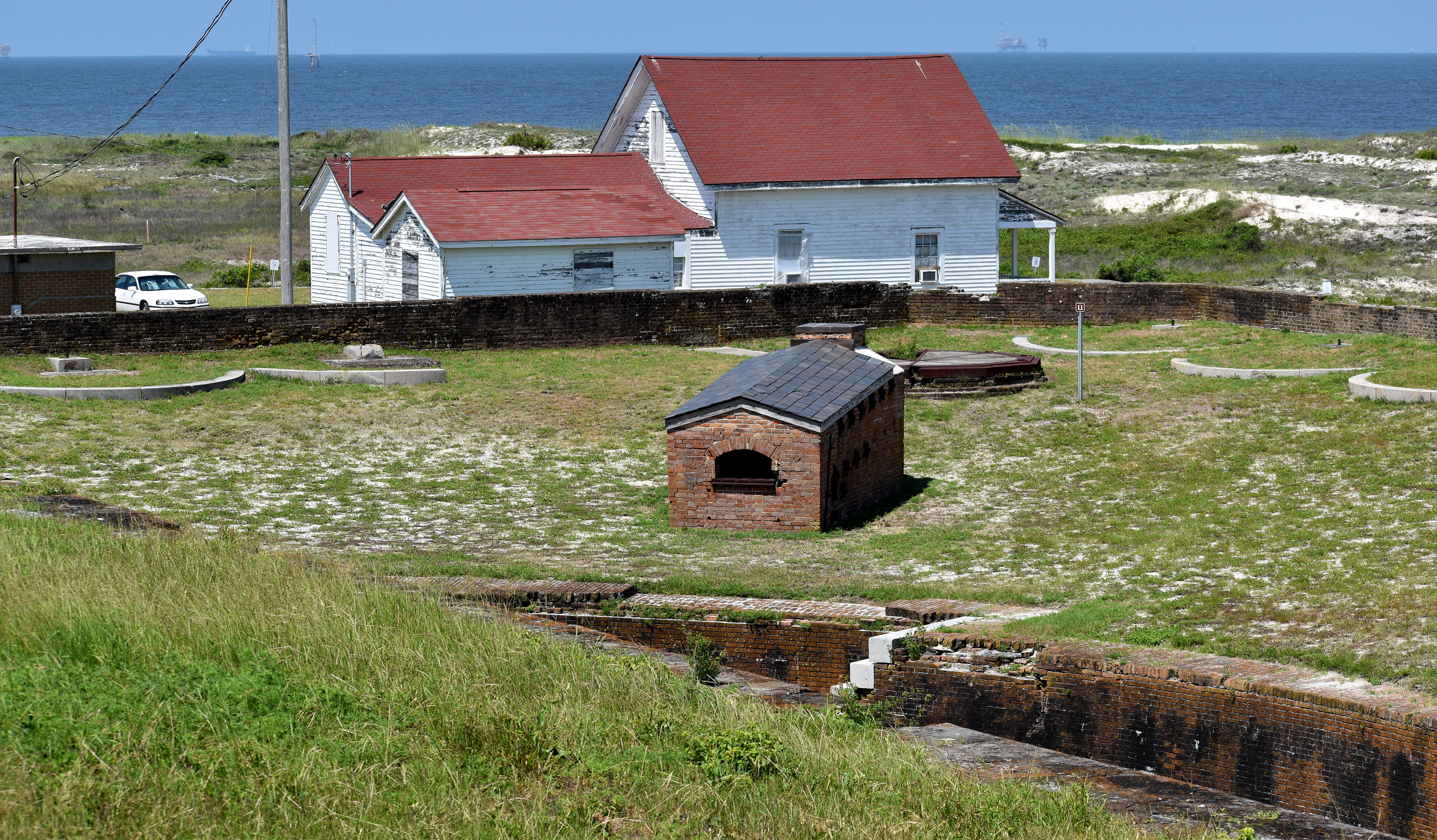

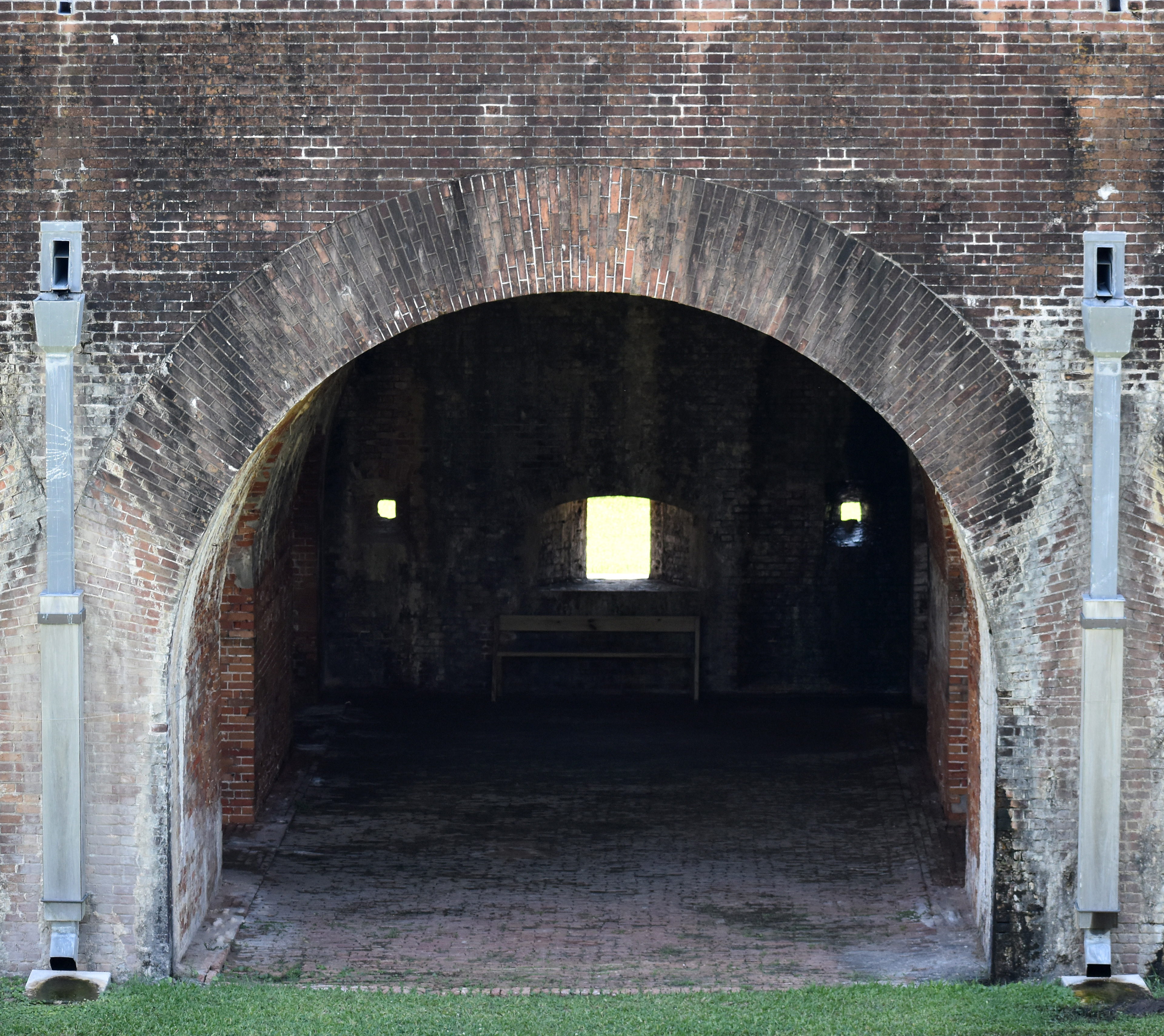

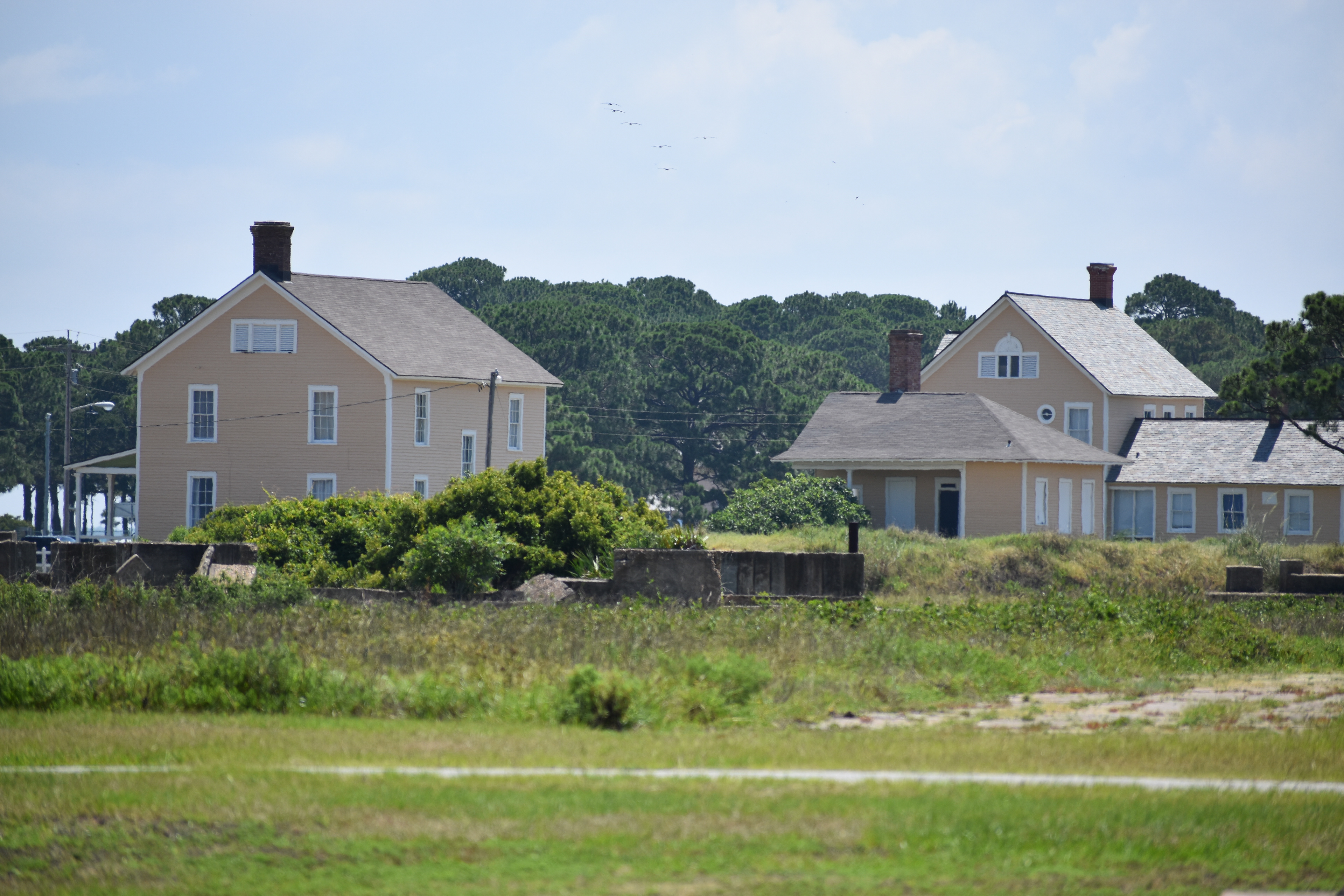

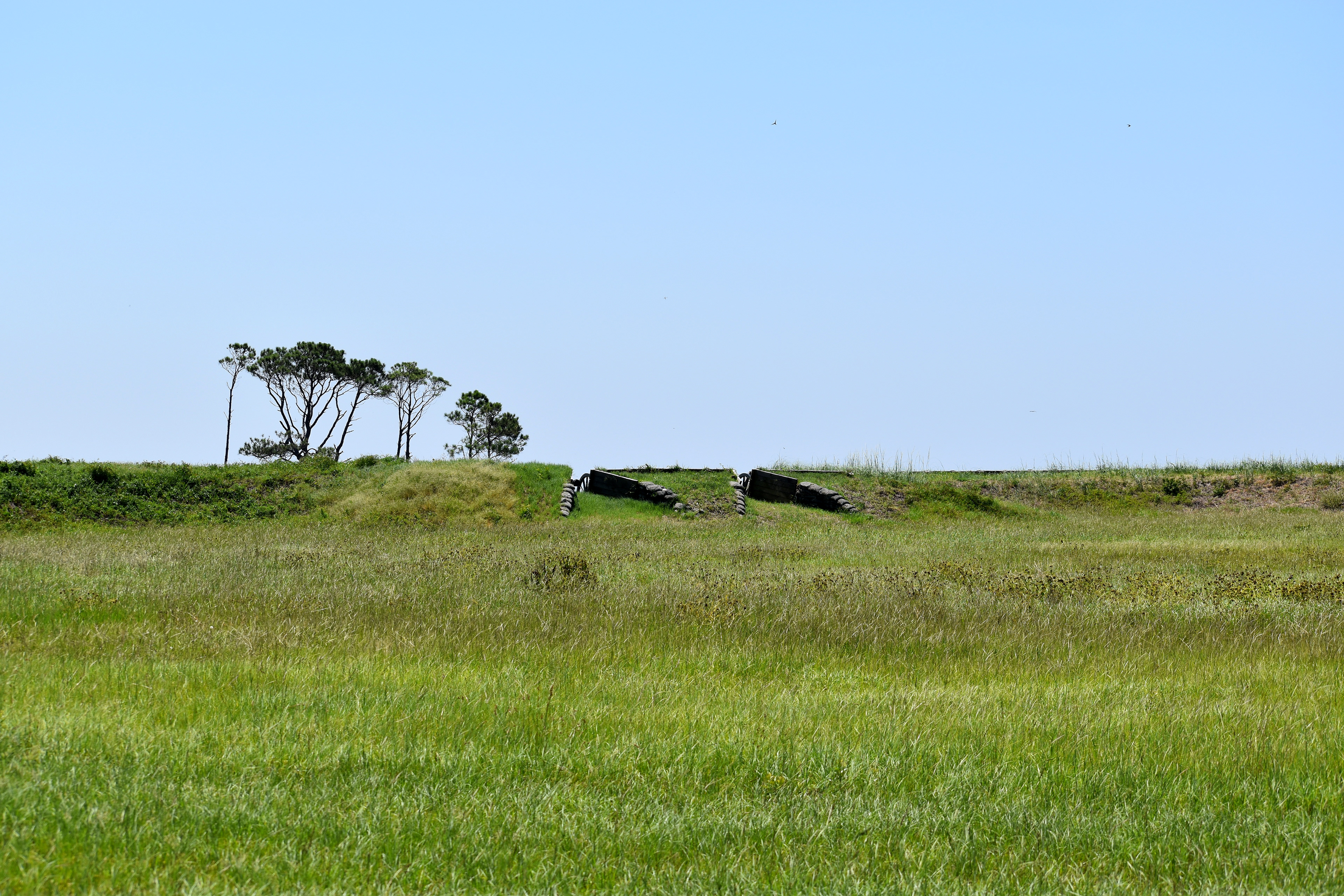
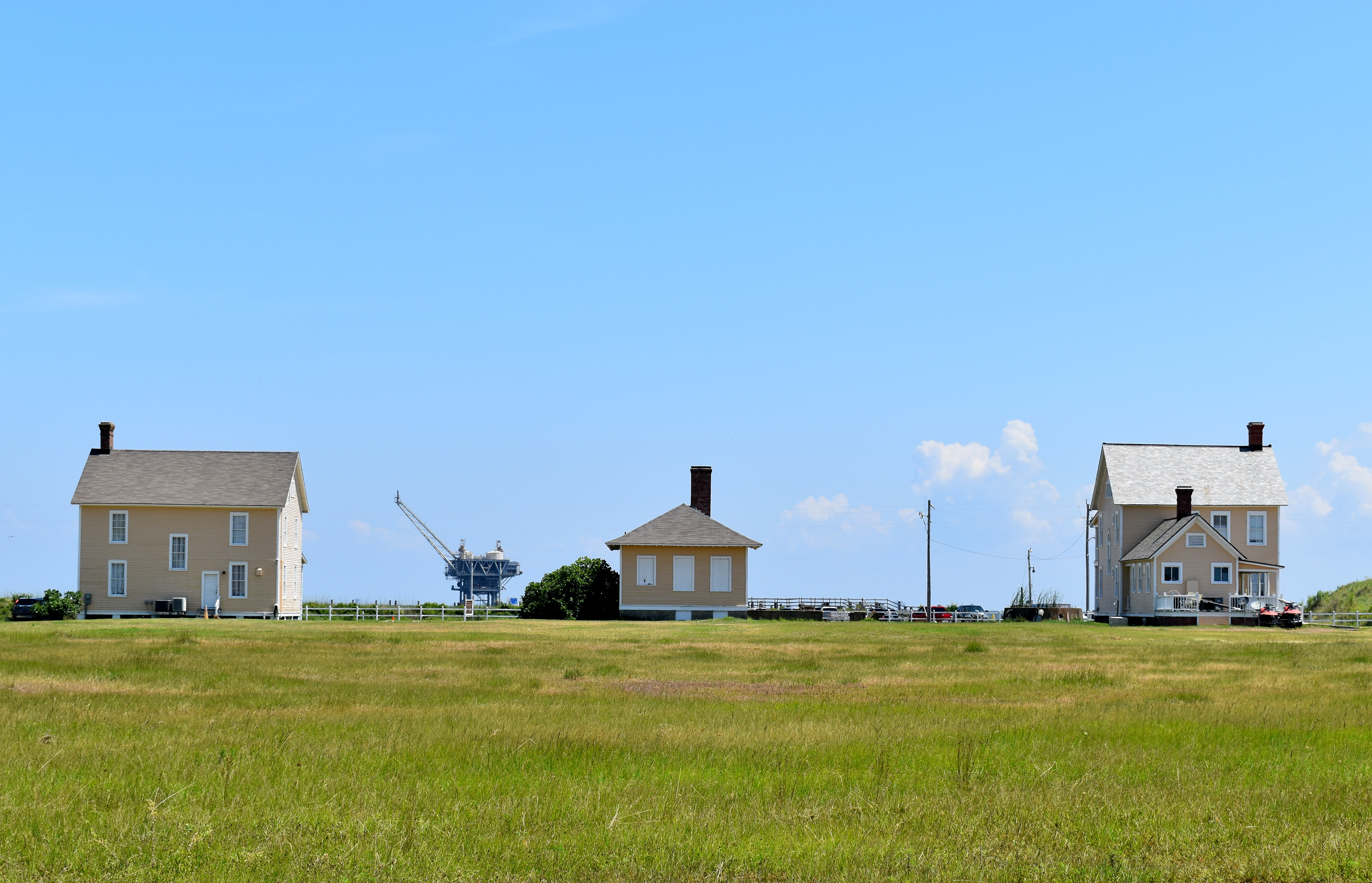
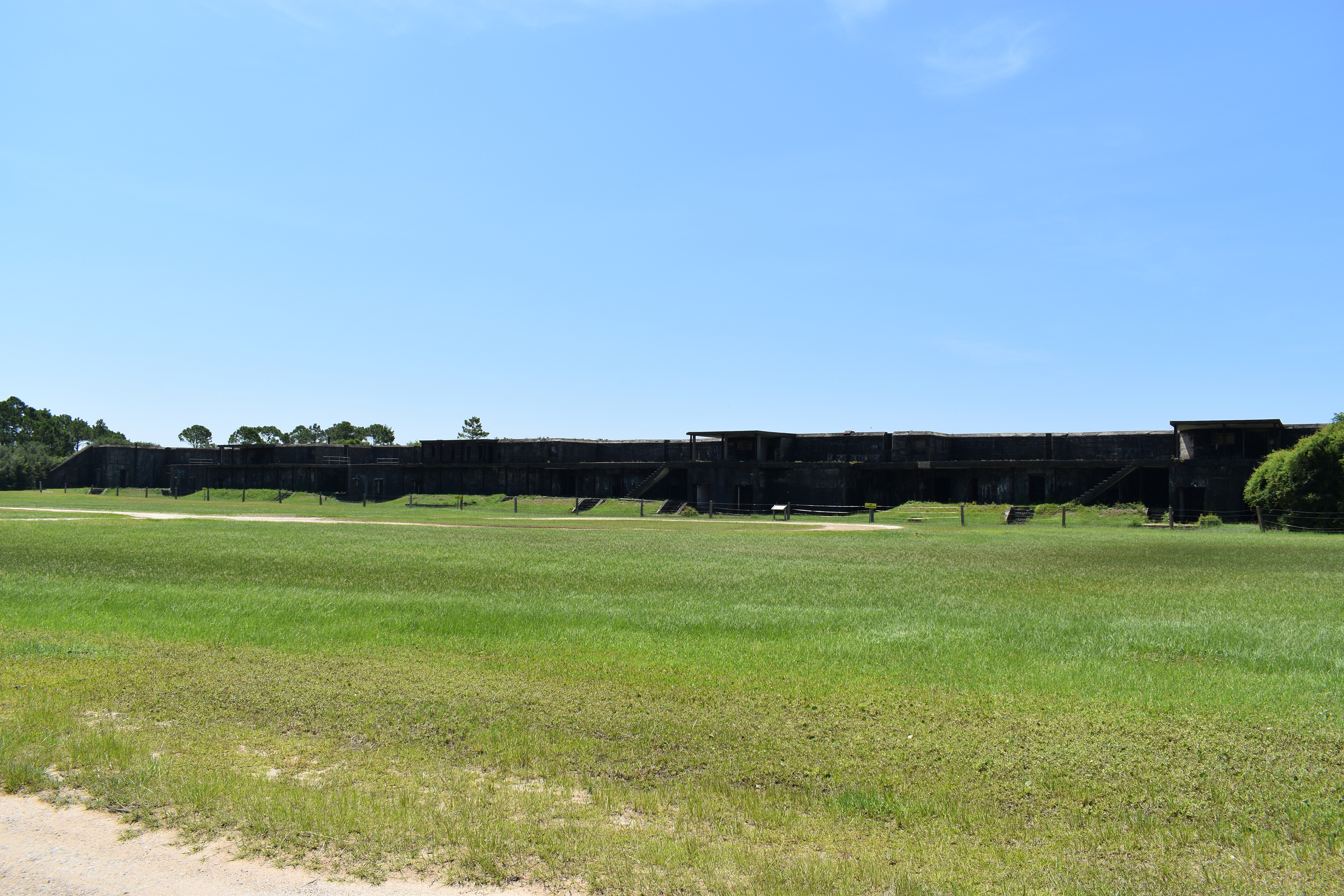
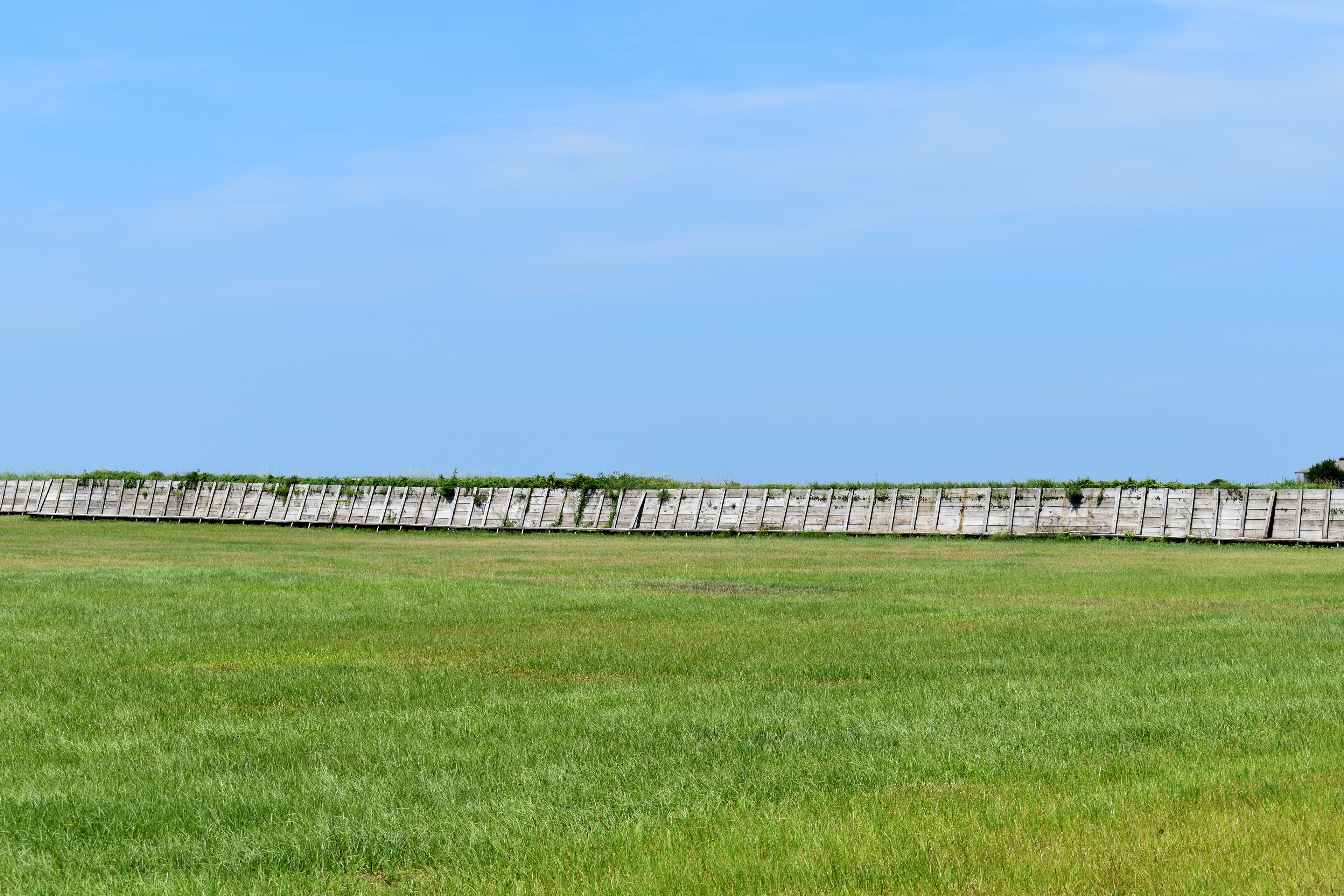
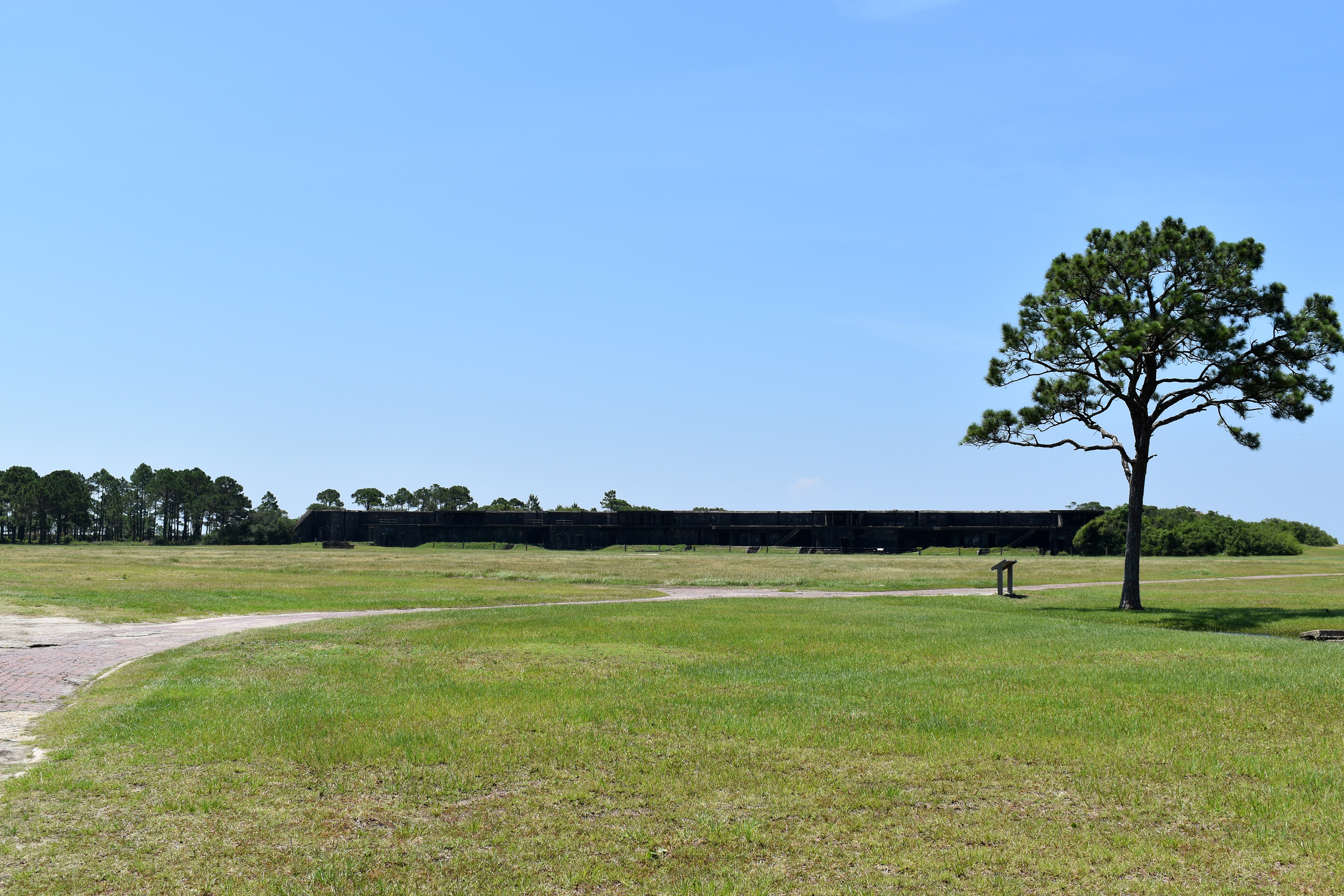
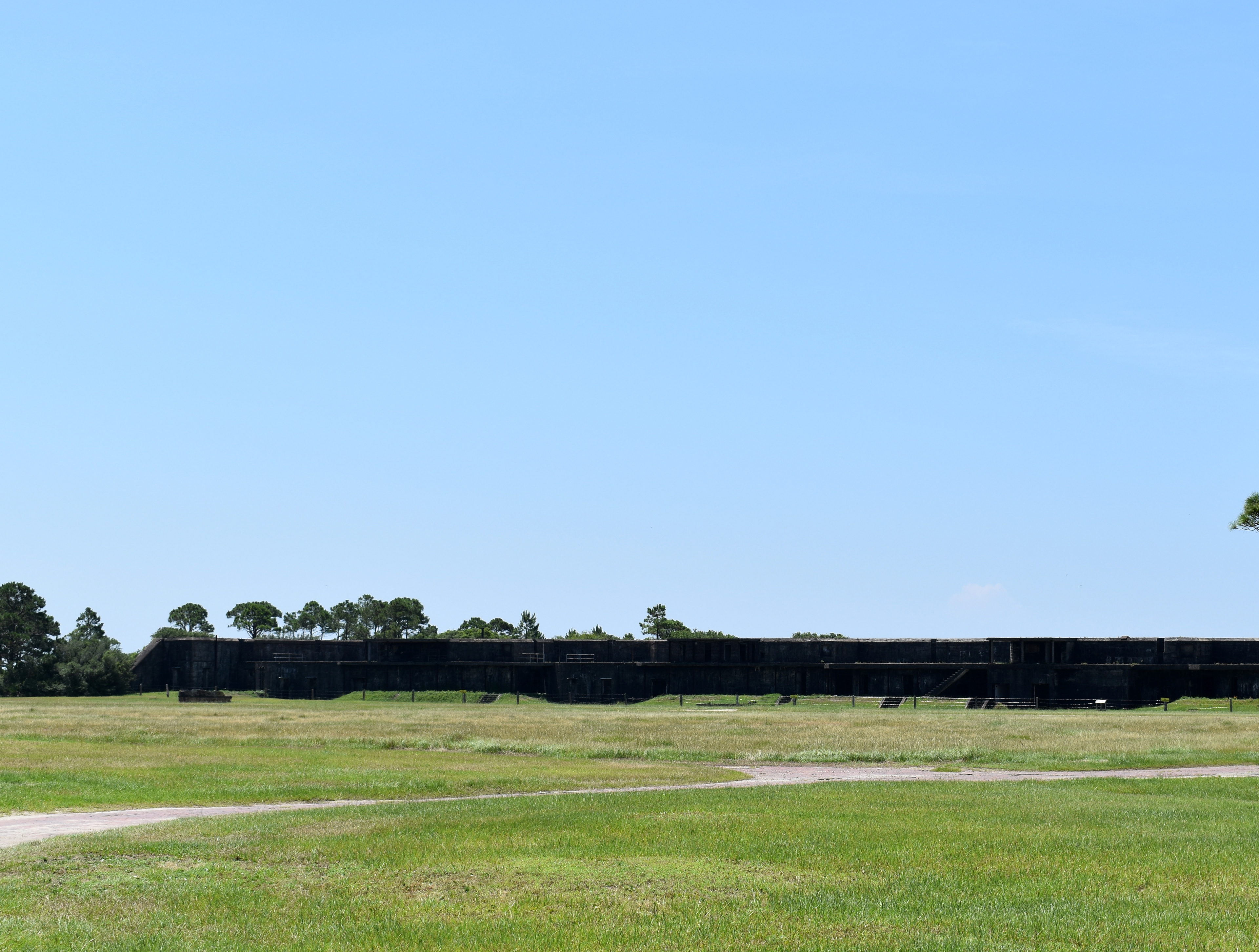


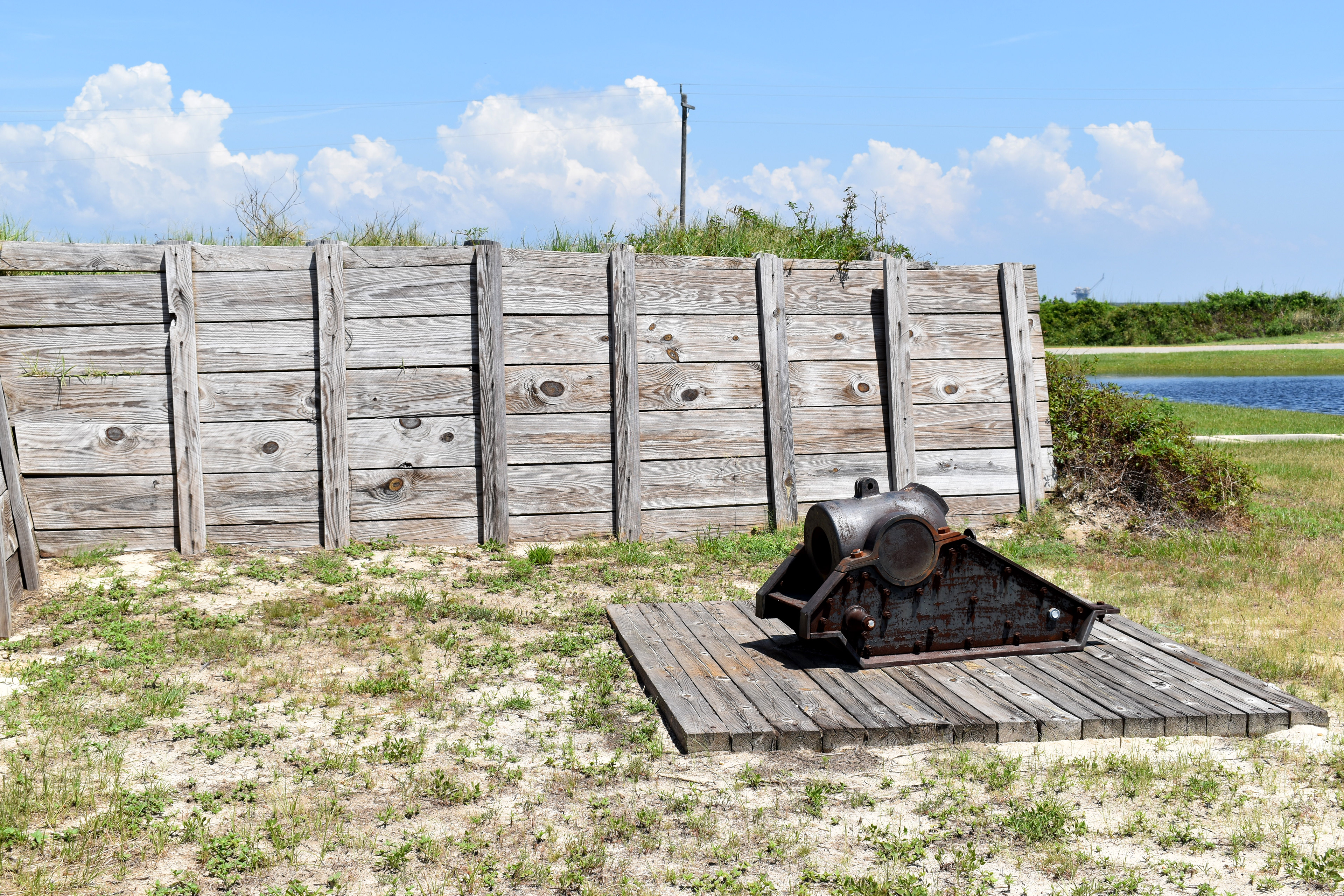
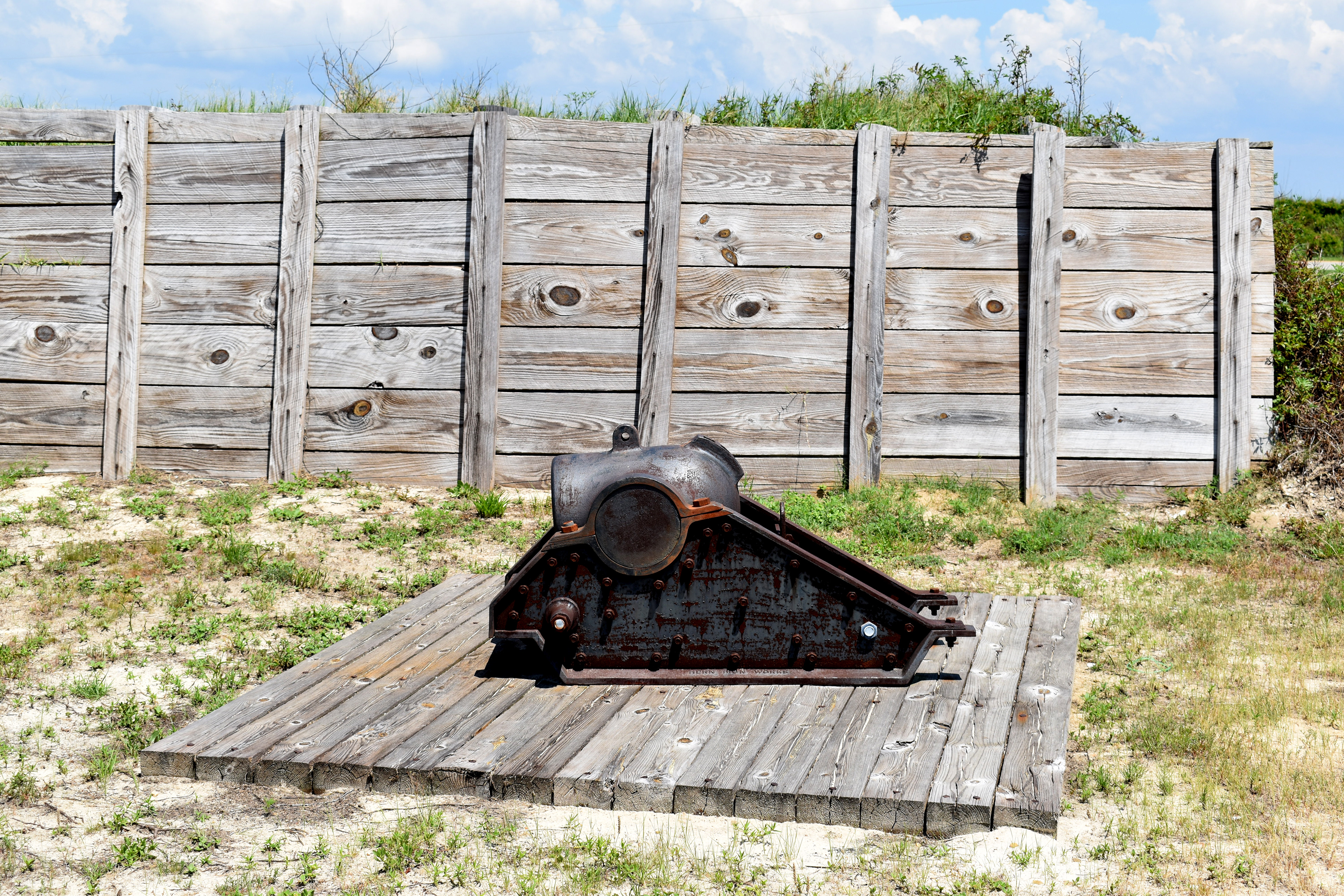





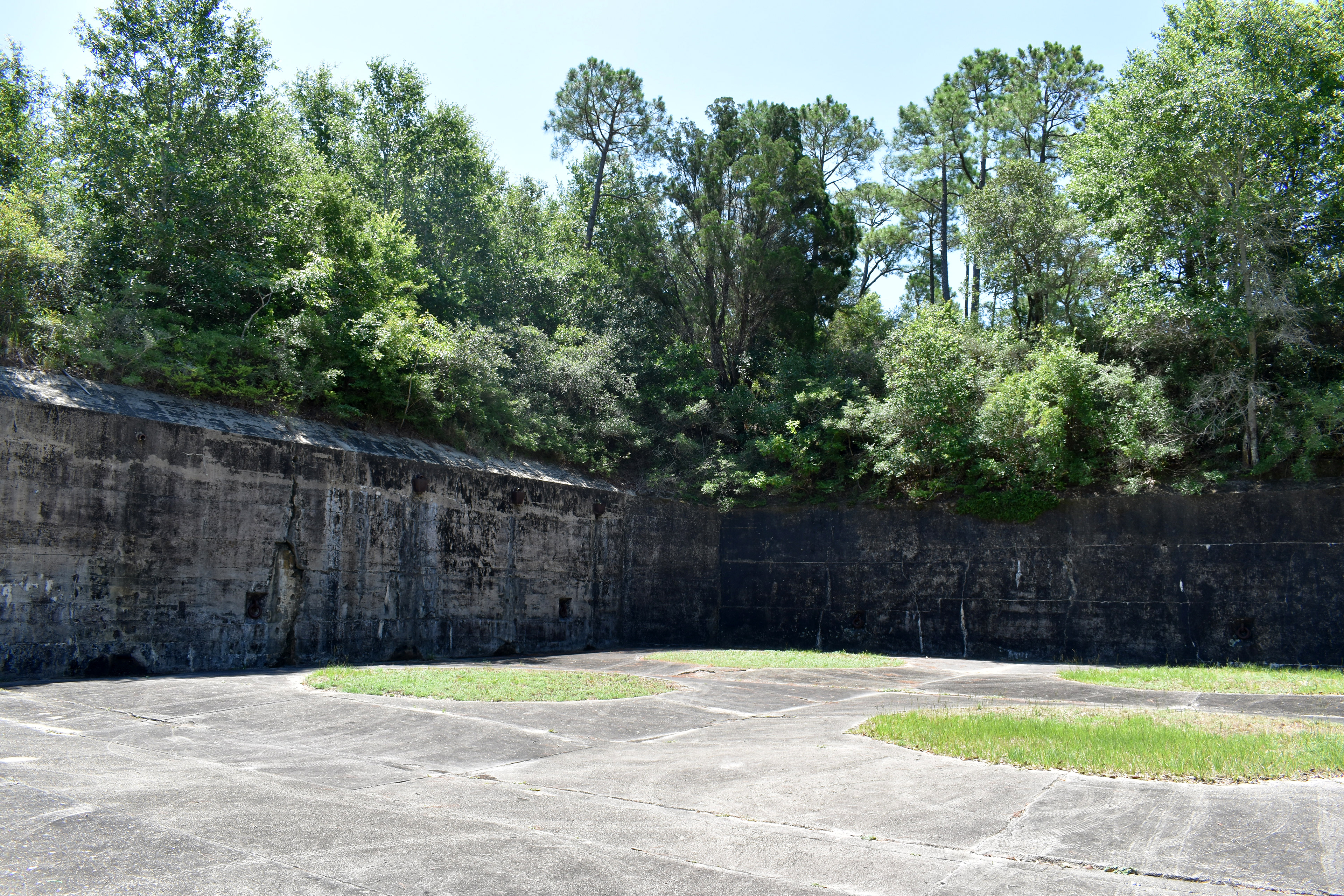
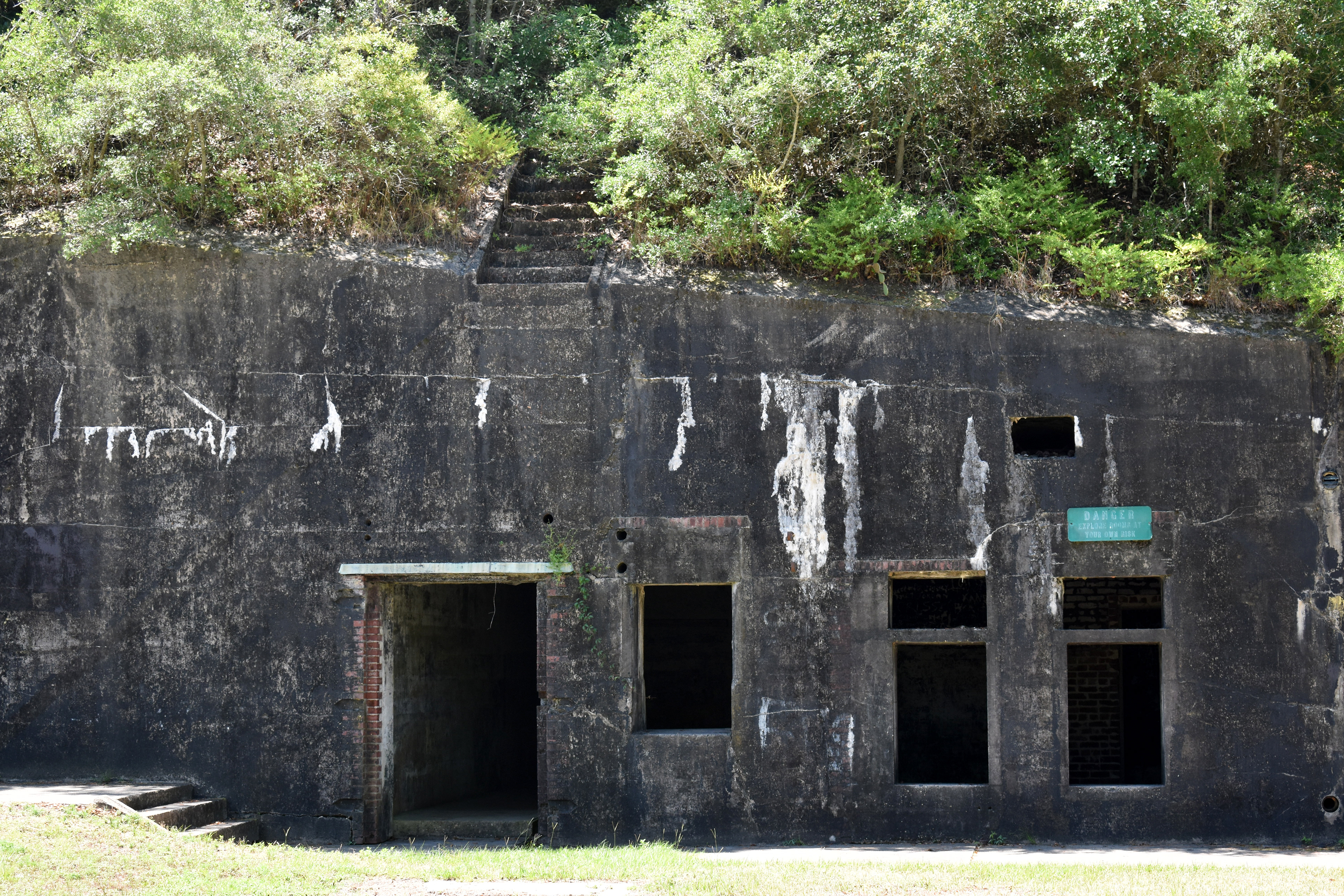
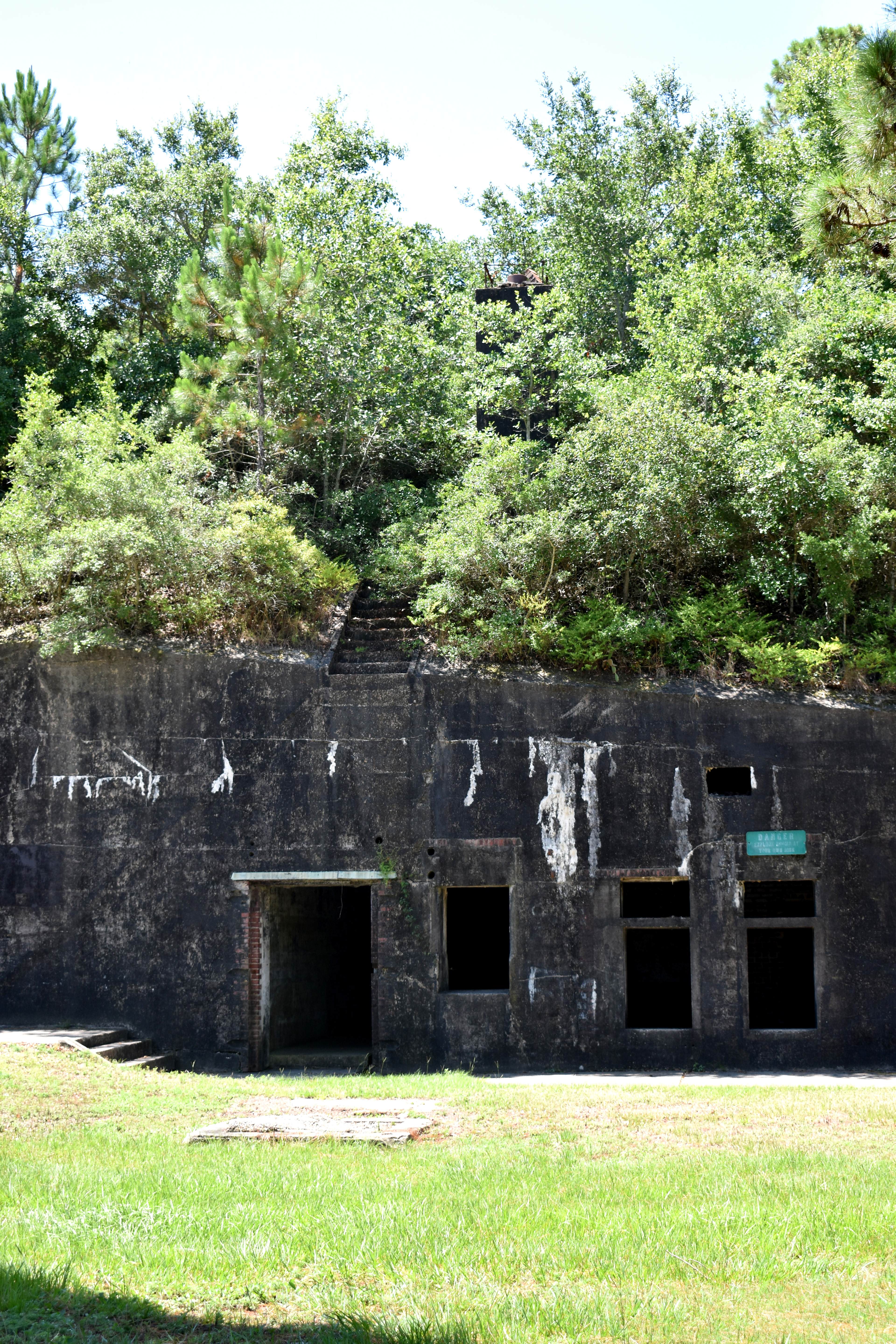
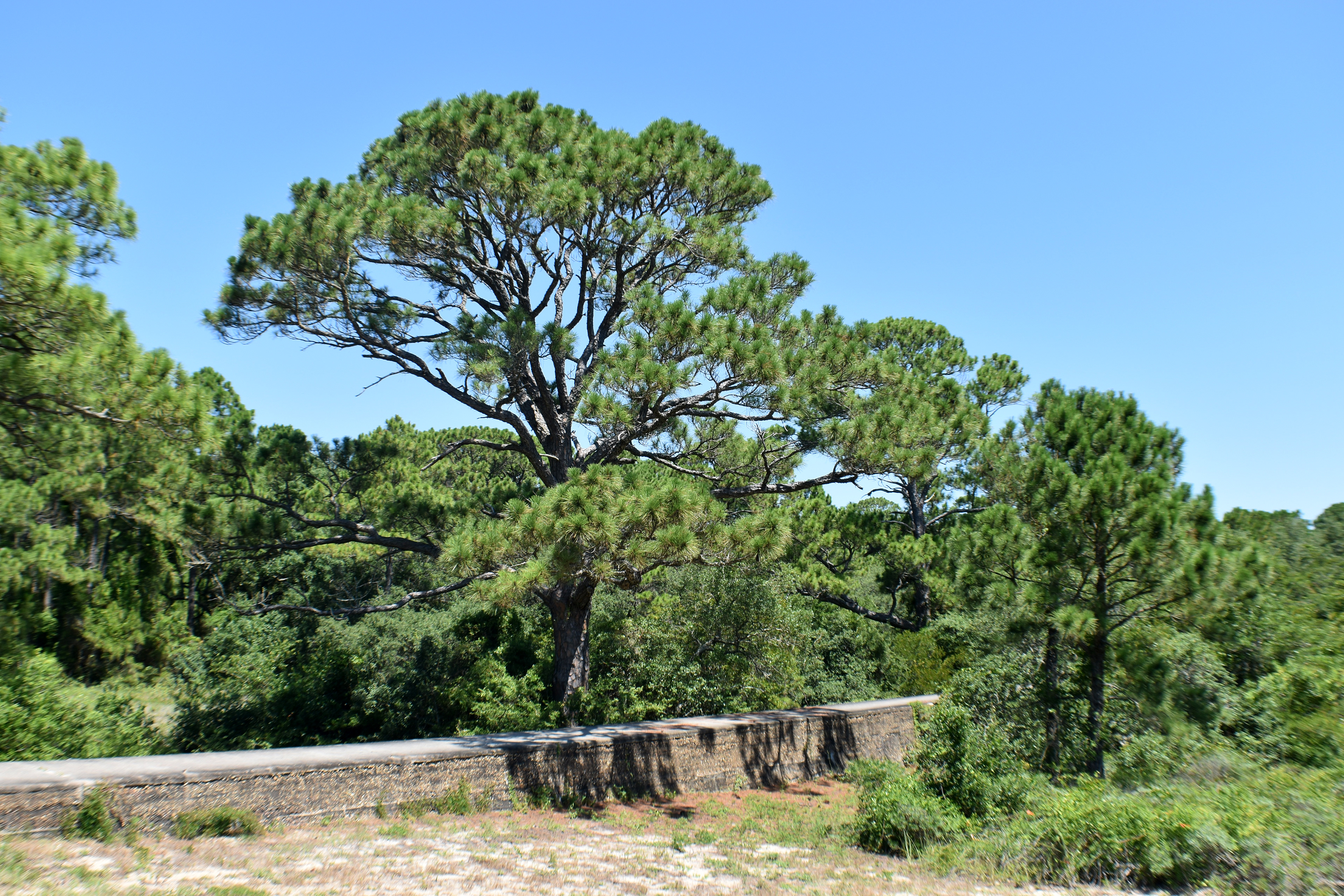
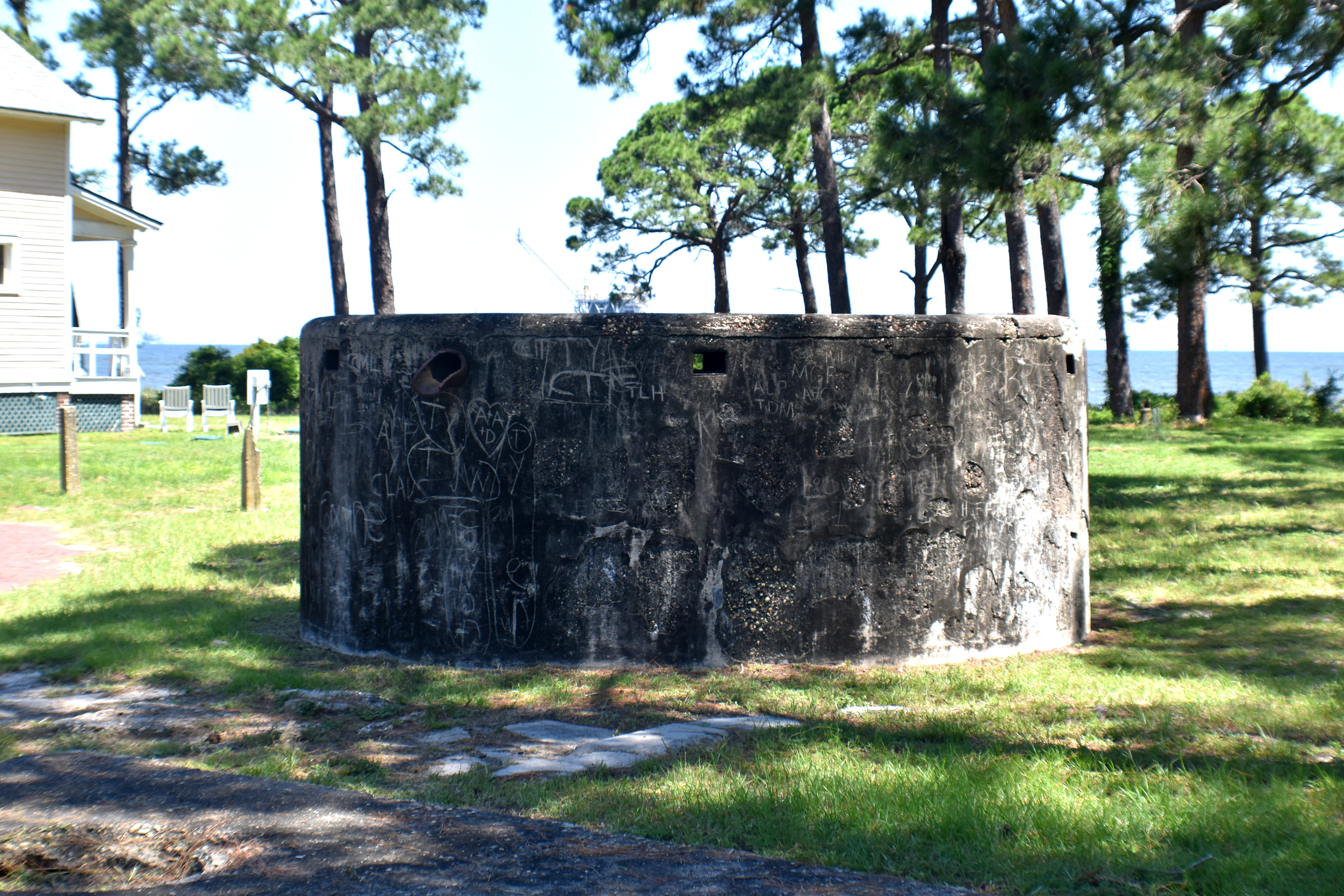

Original Plan View of Fort Morgans Design, Courtesy of the National Archives.
The Citadel (Barracks) of Fort Morgan following the Battle of Mobile Bay, Courtesy of the National Archives.
